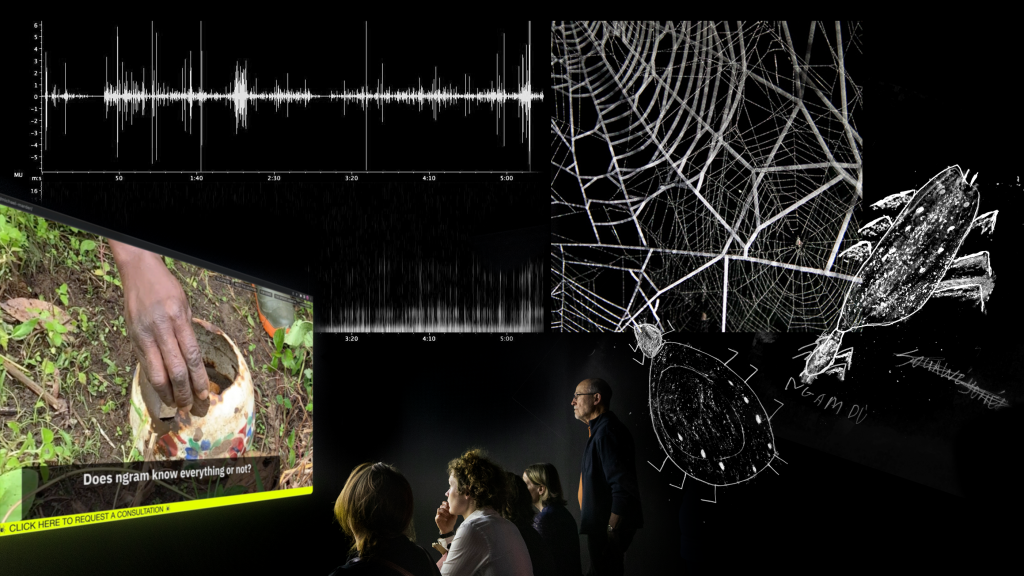

...

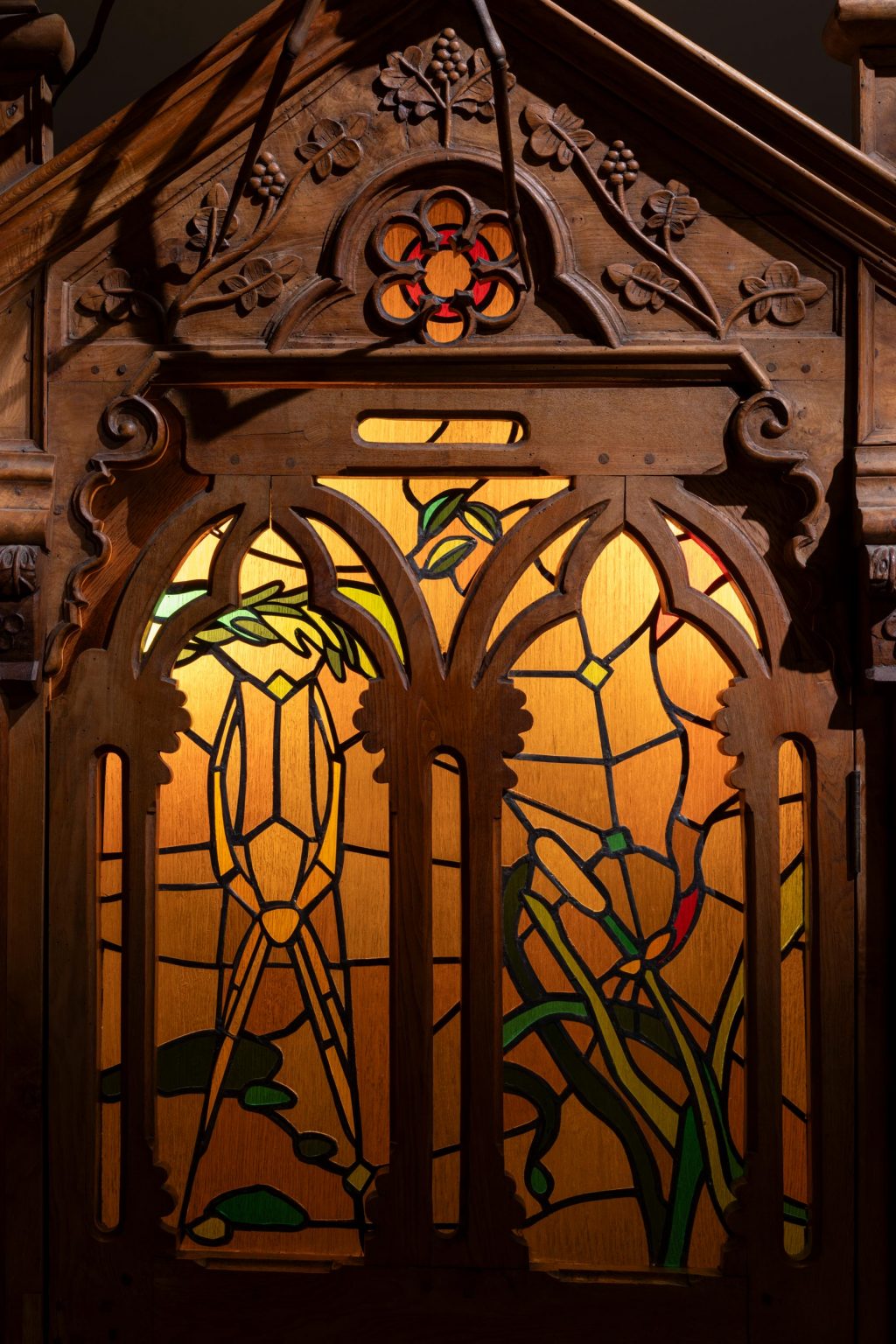
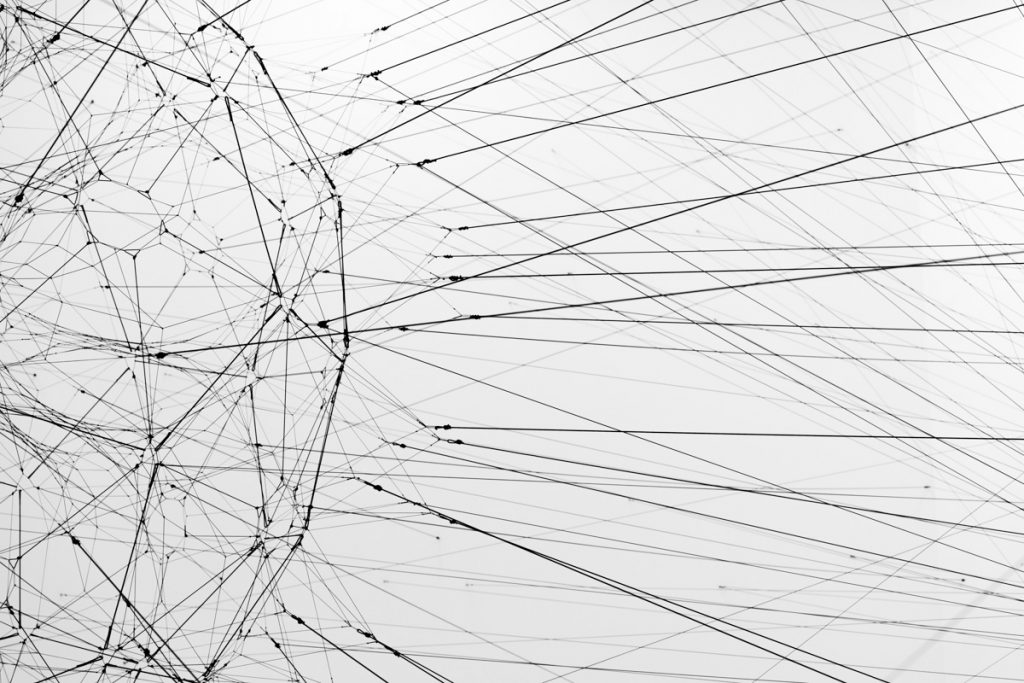
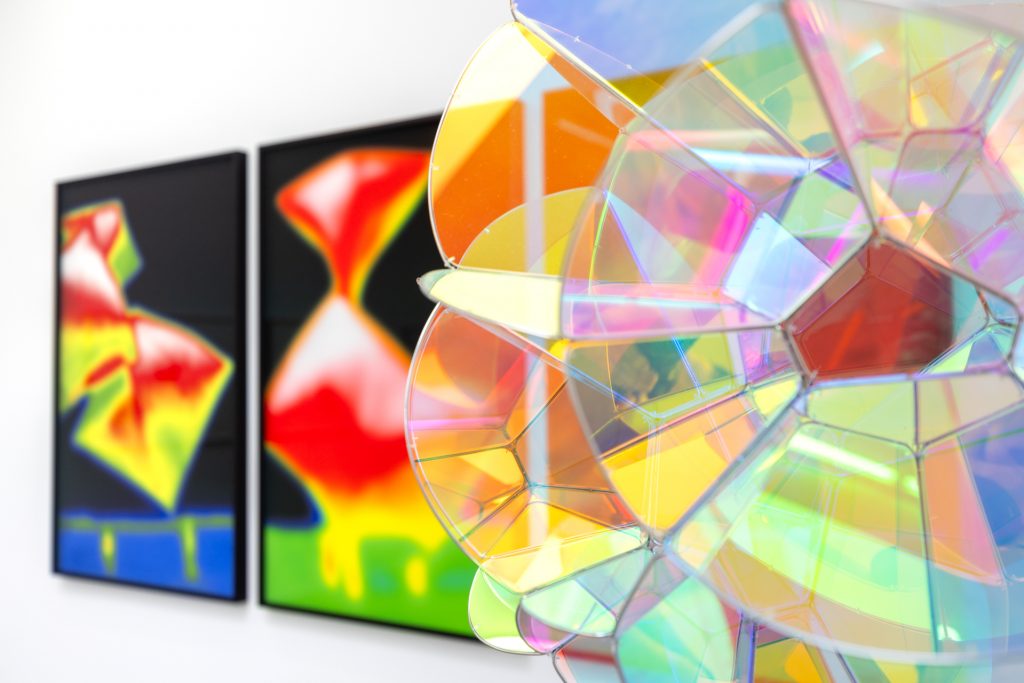
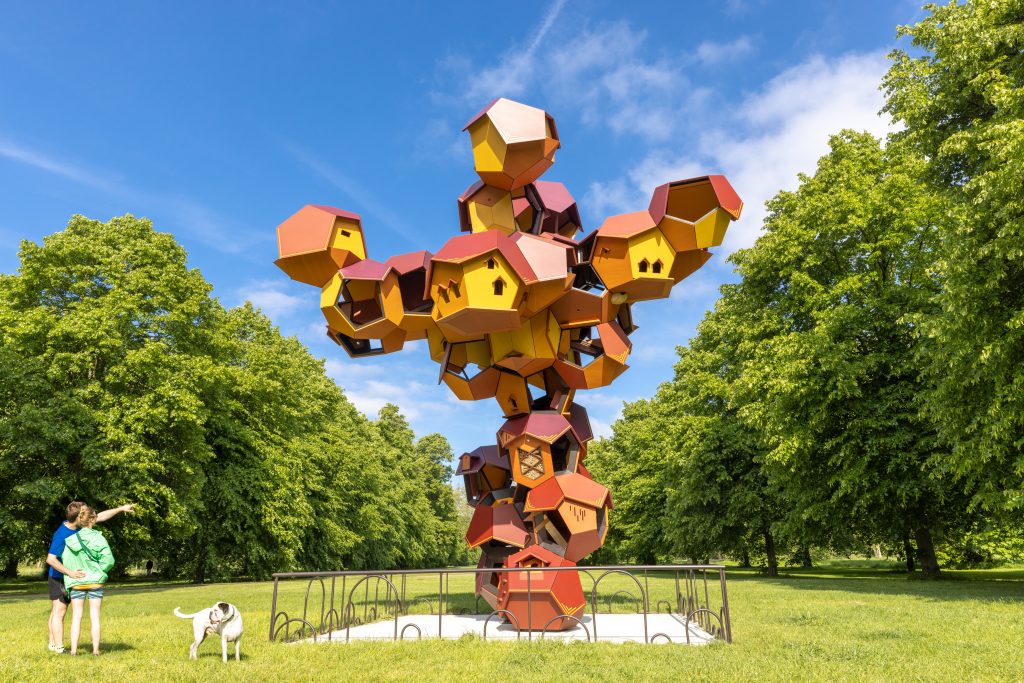
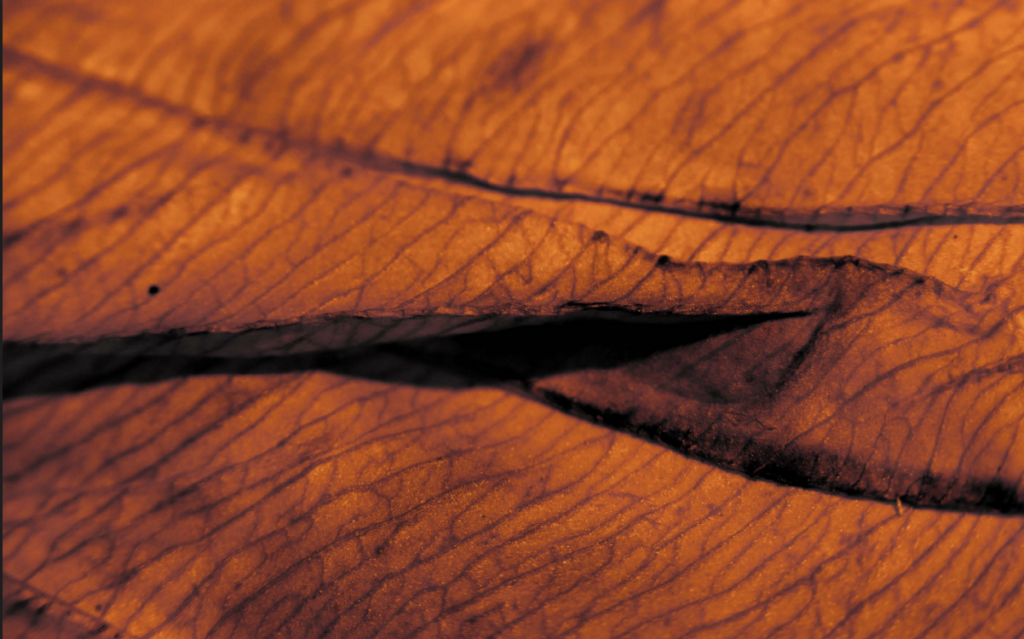
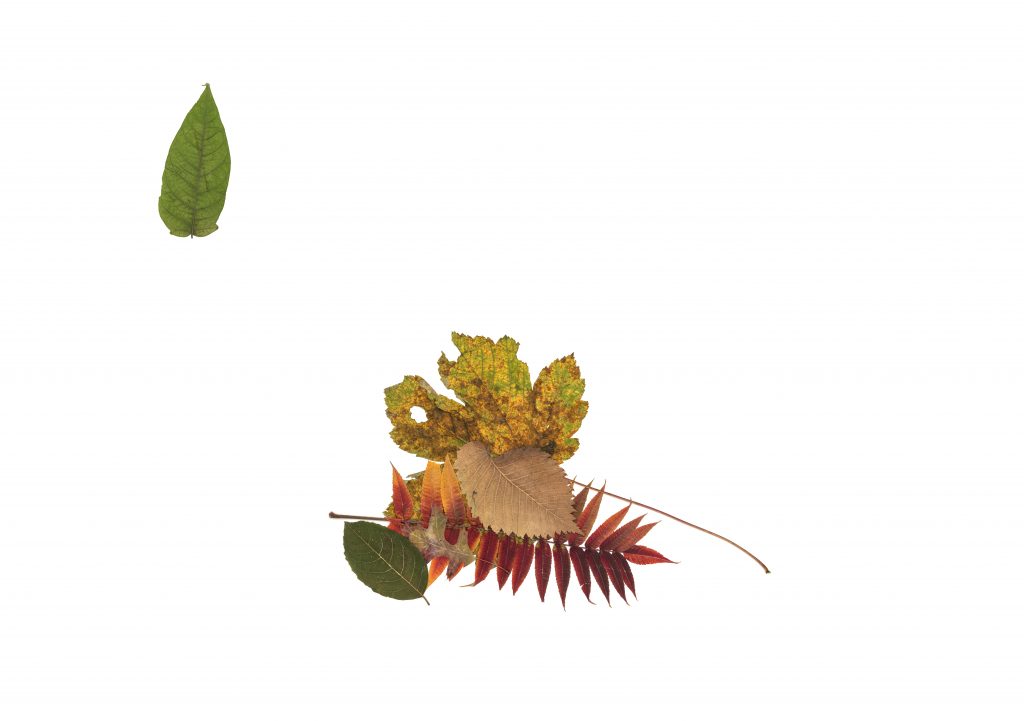
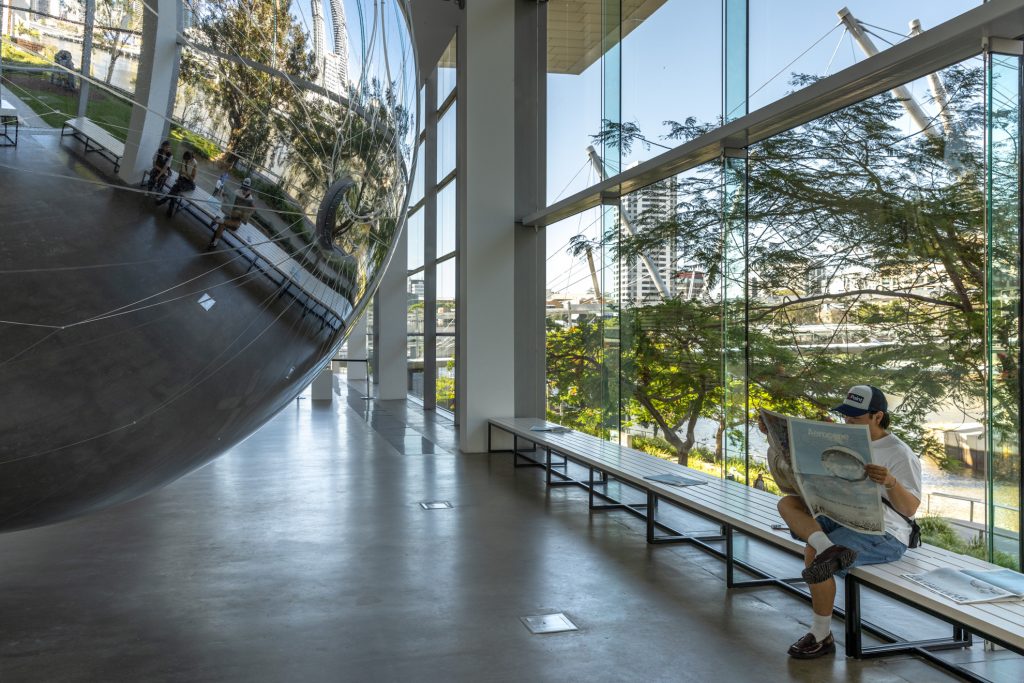
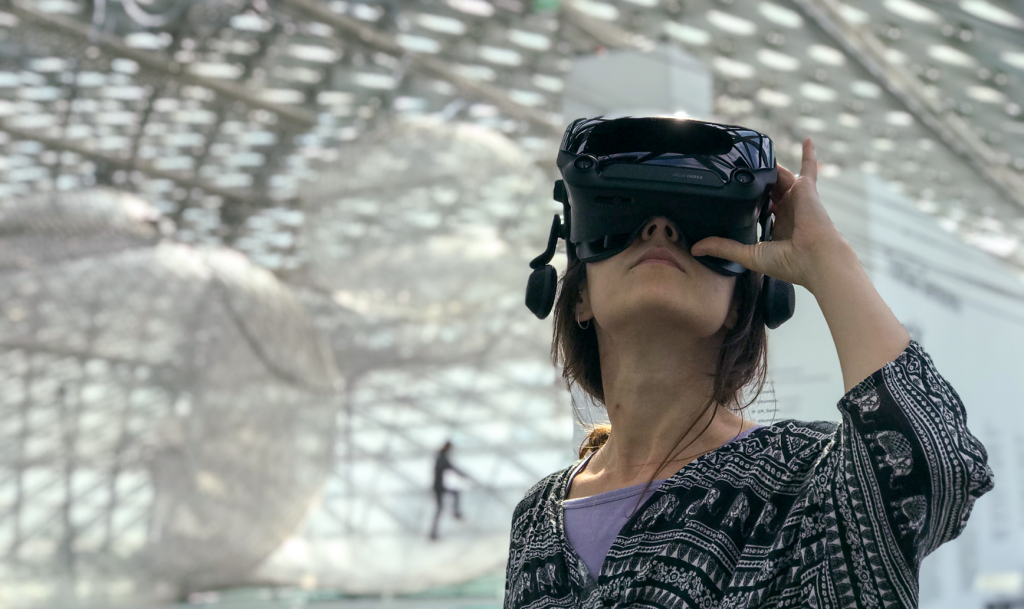
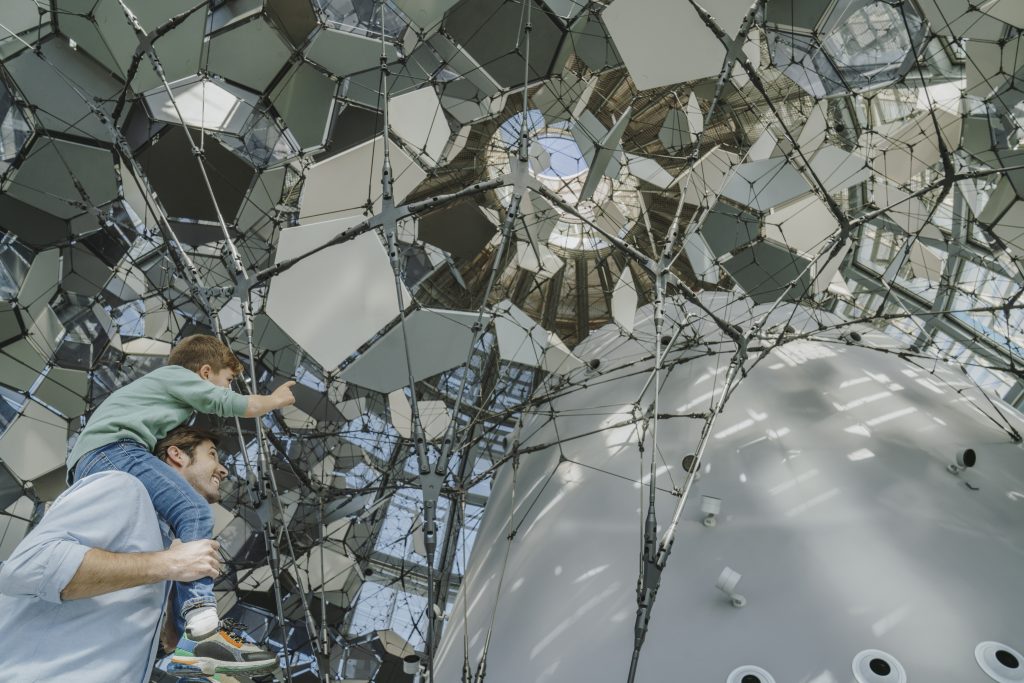

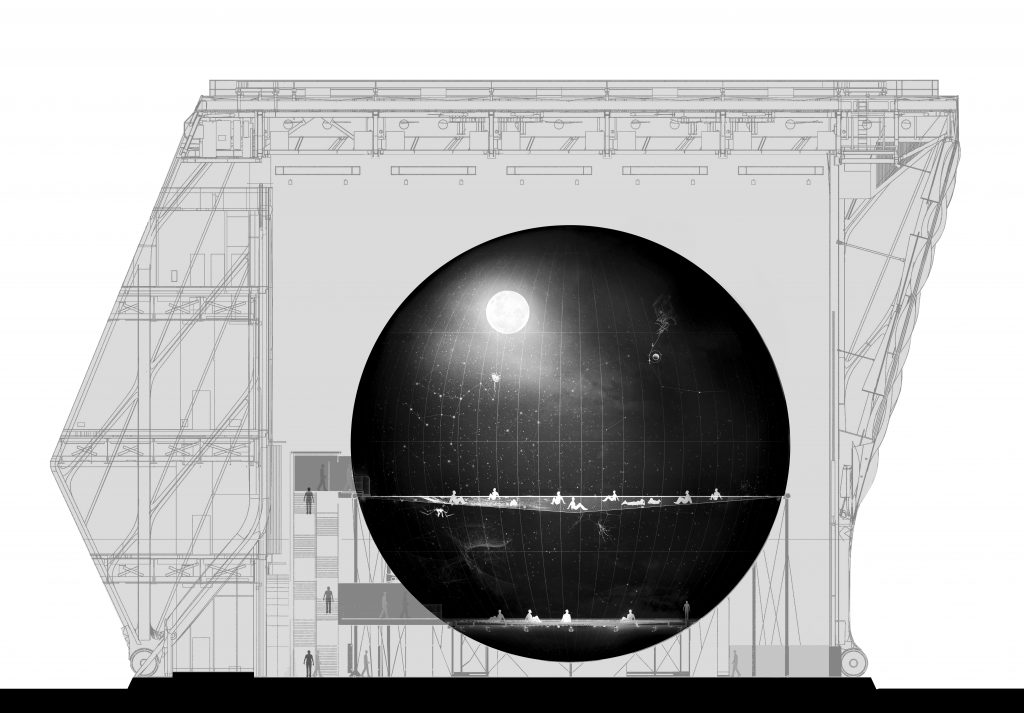
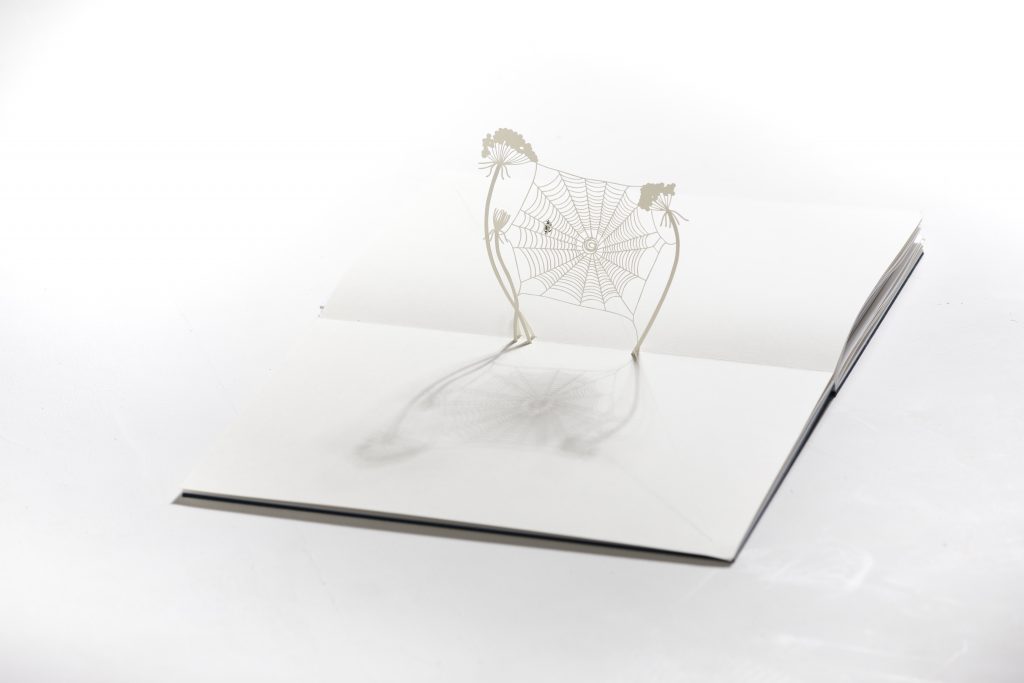

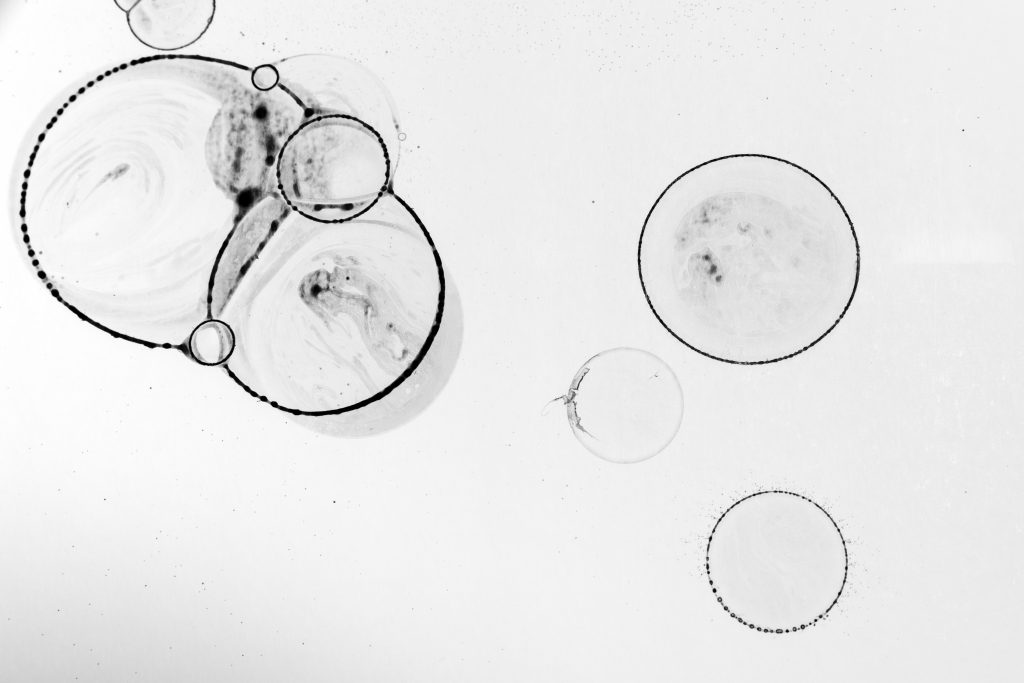
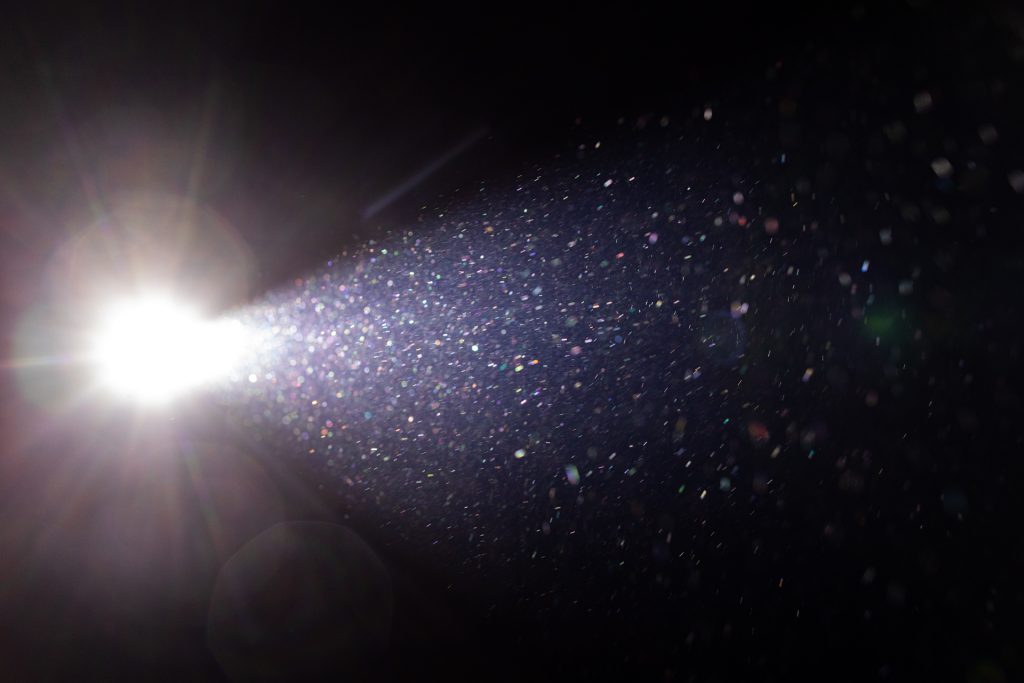
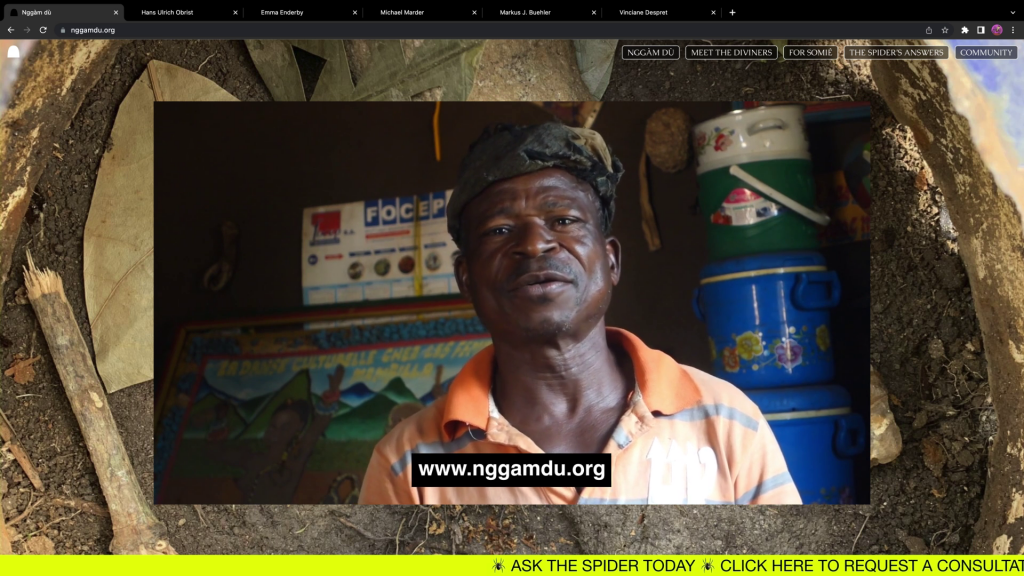
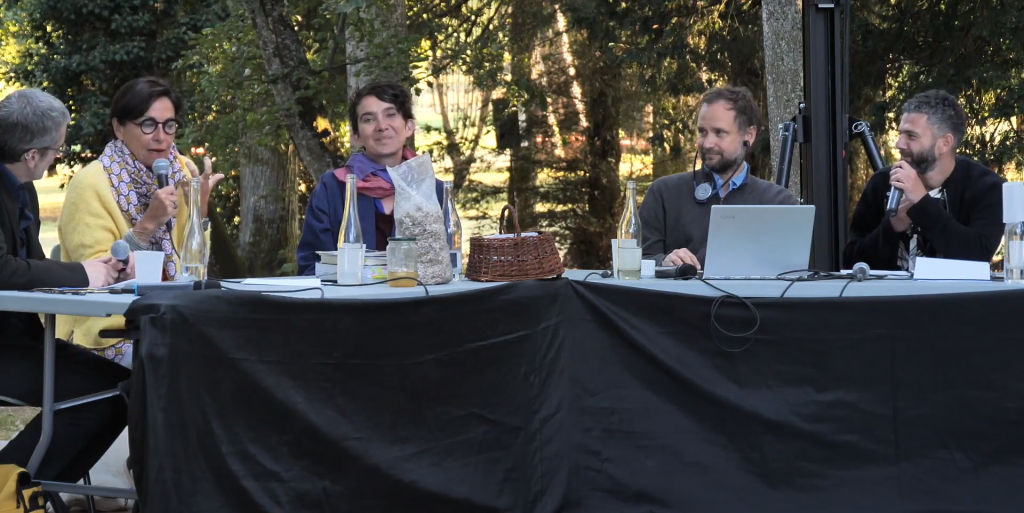
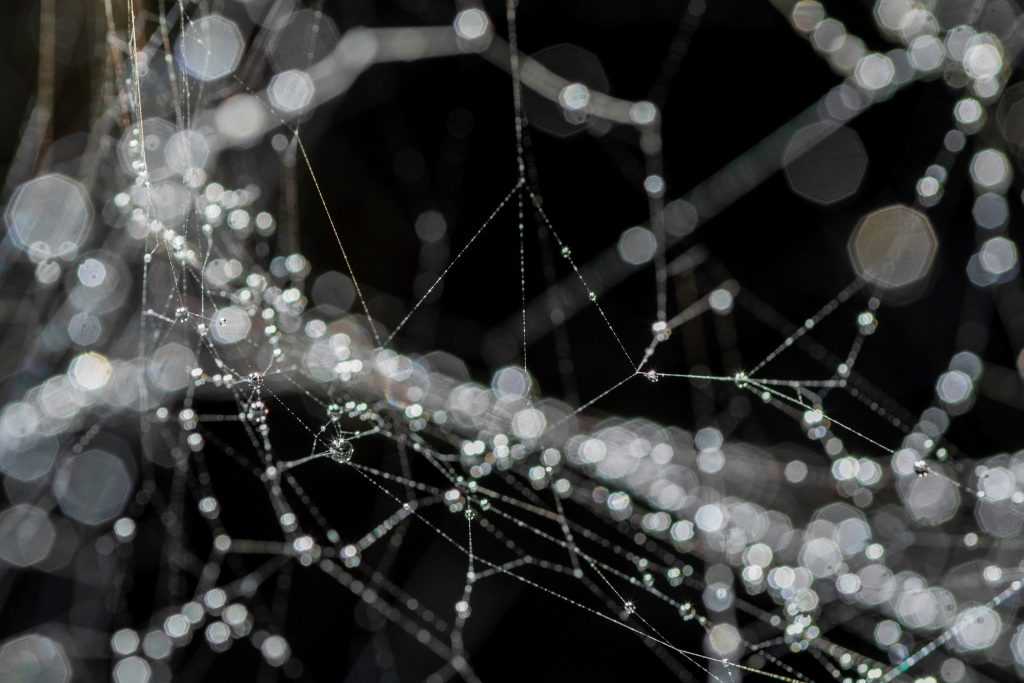
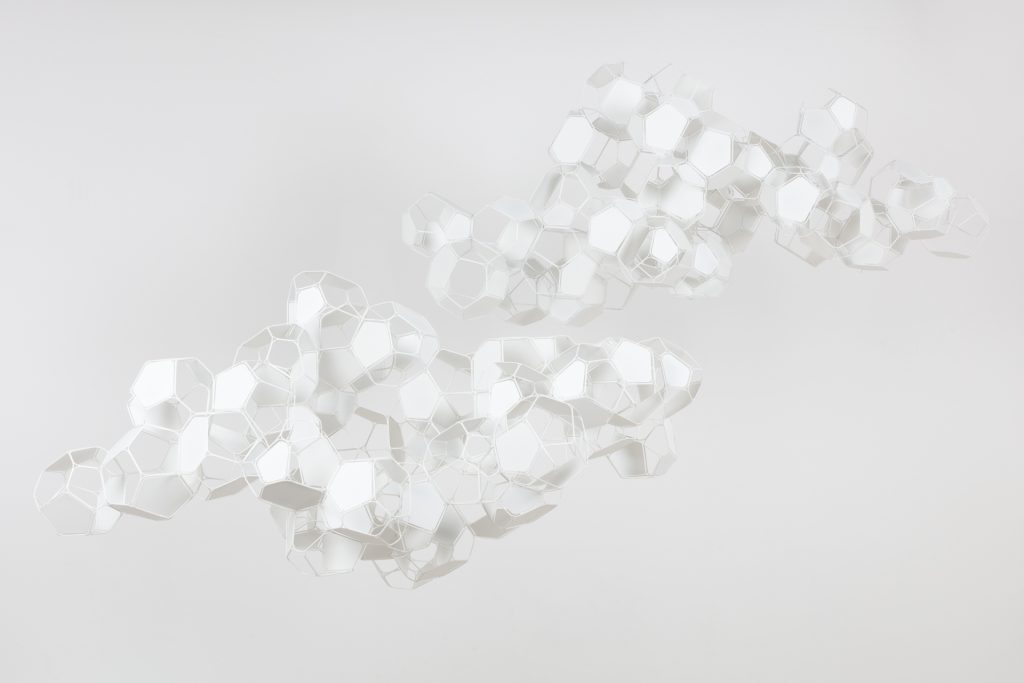
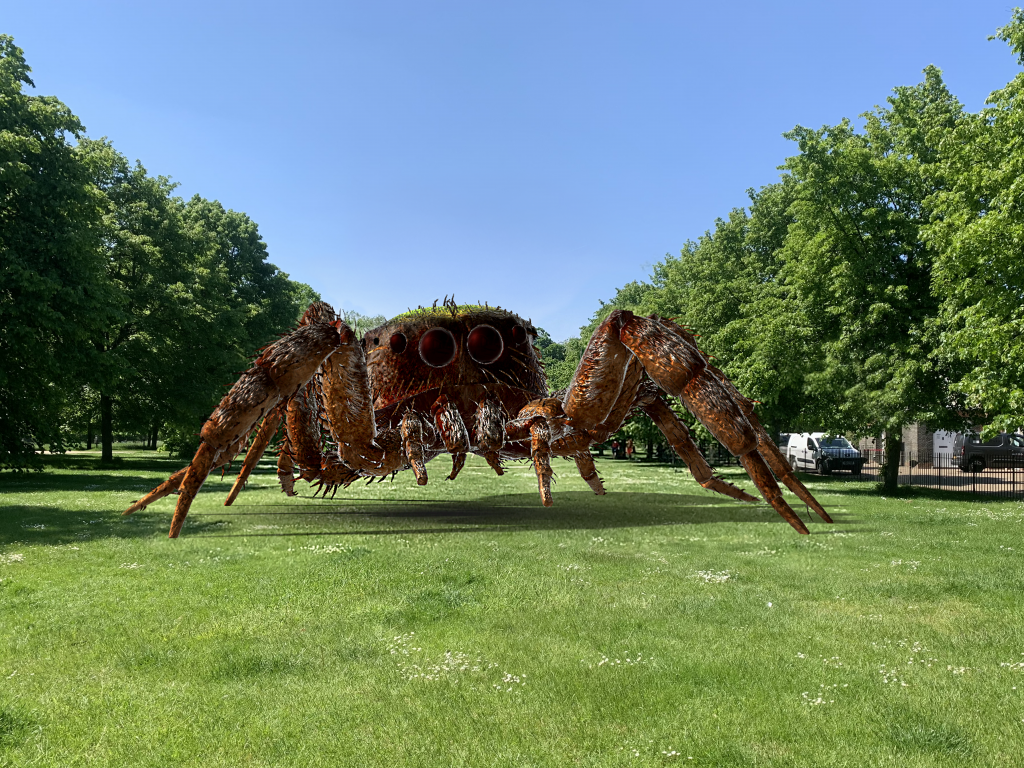
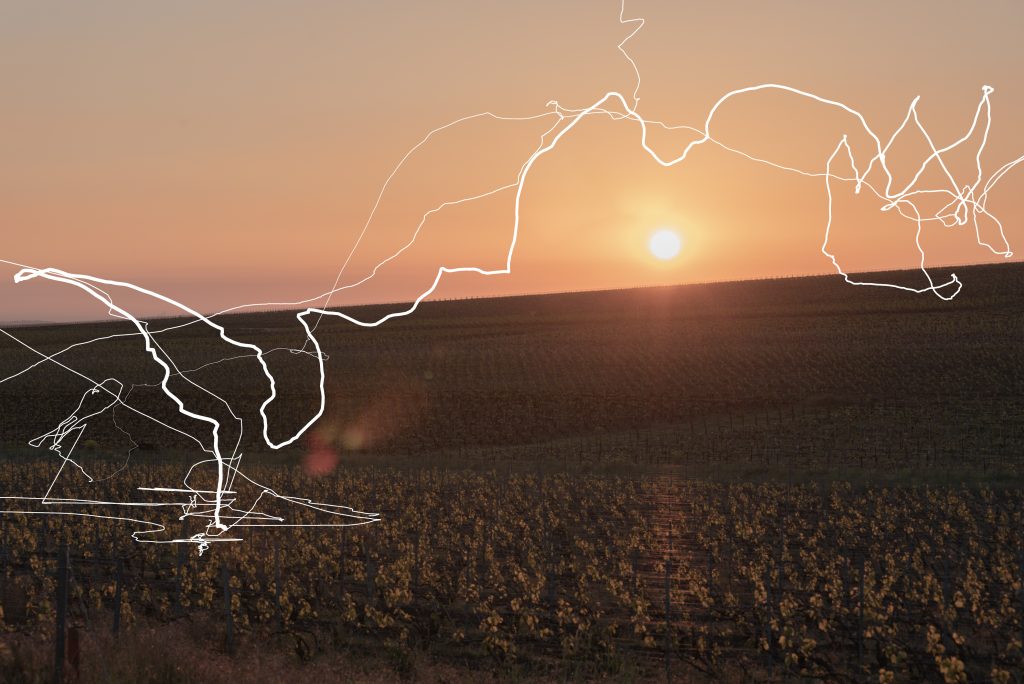
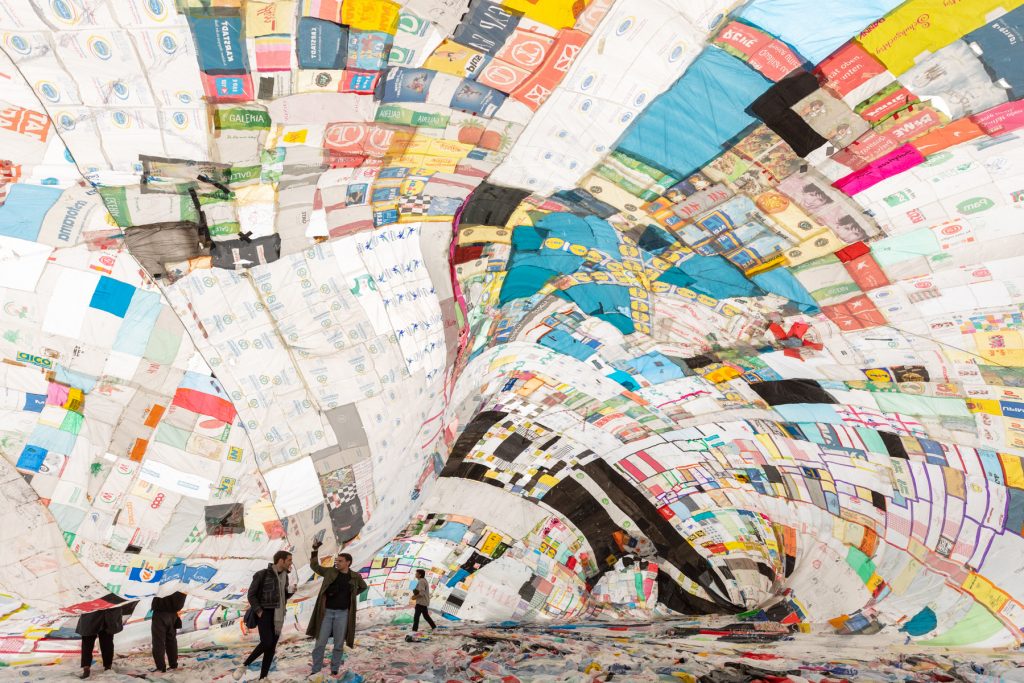
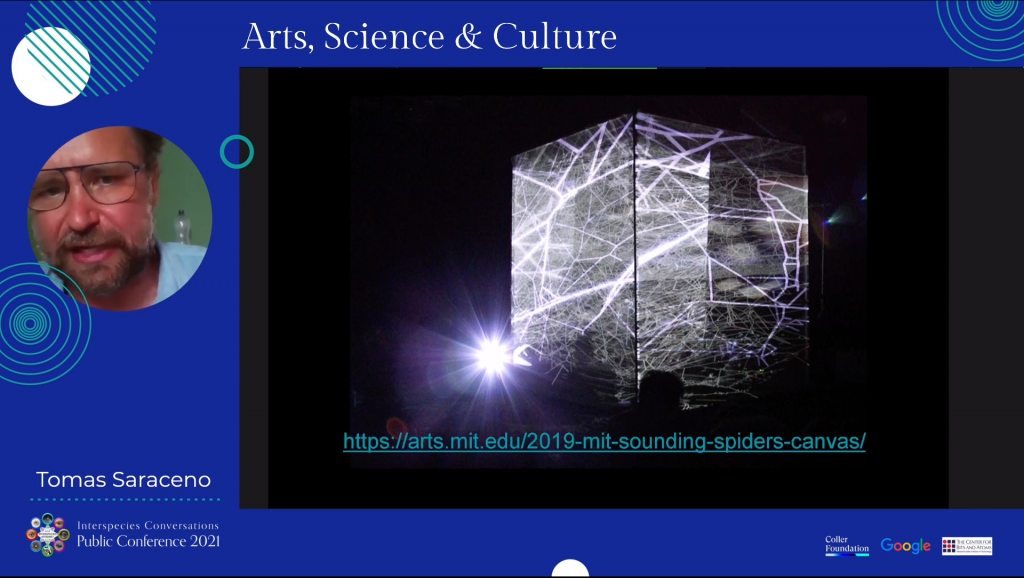
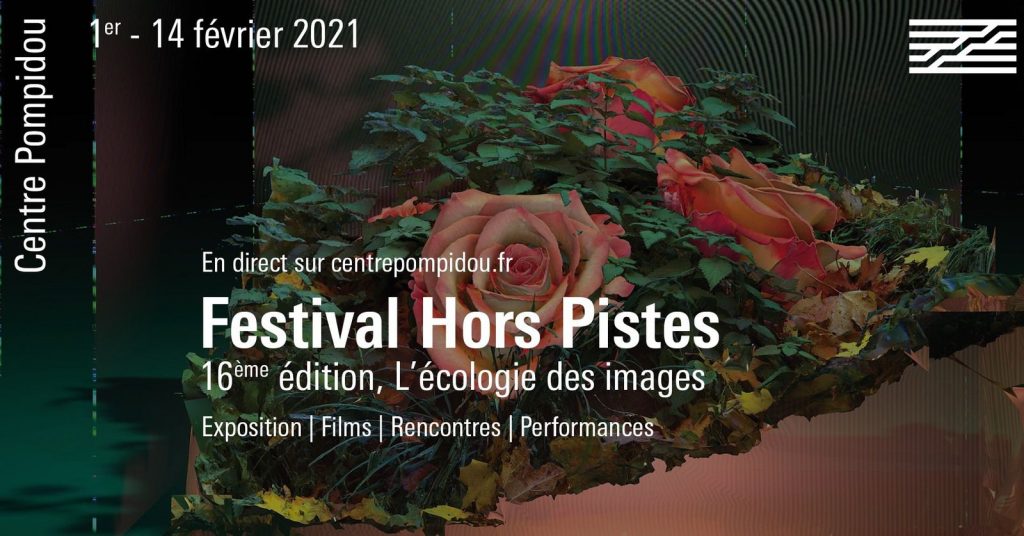
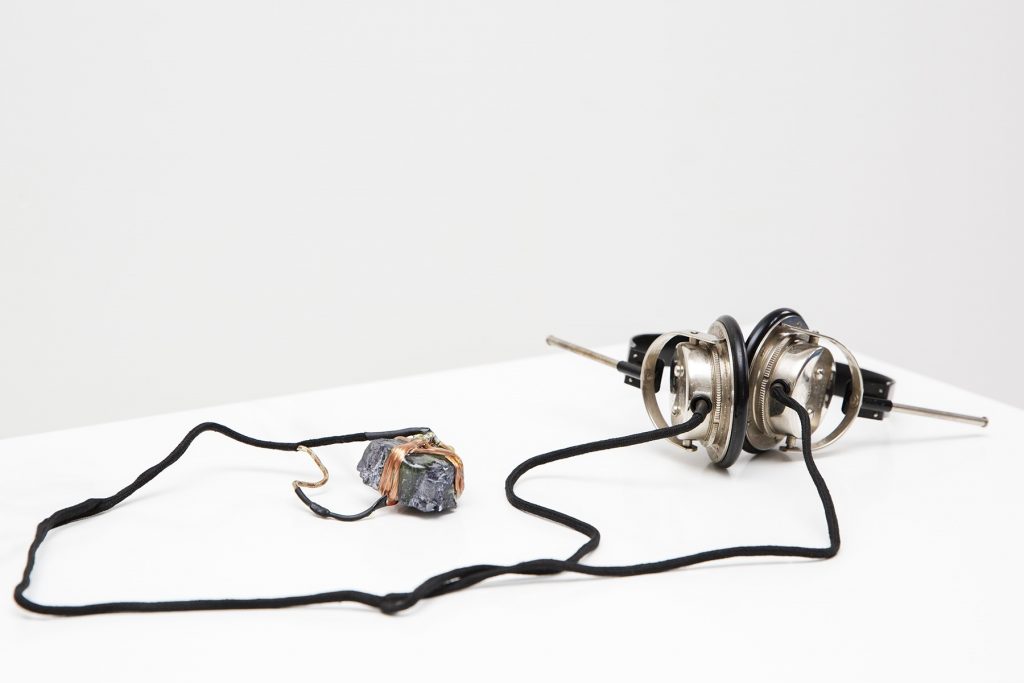
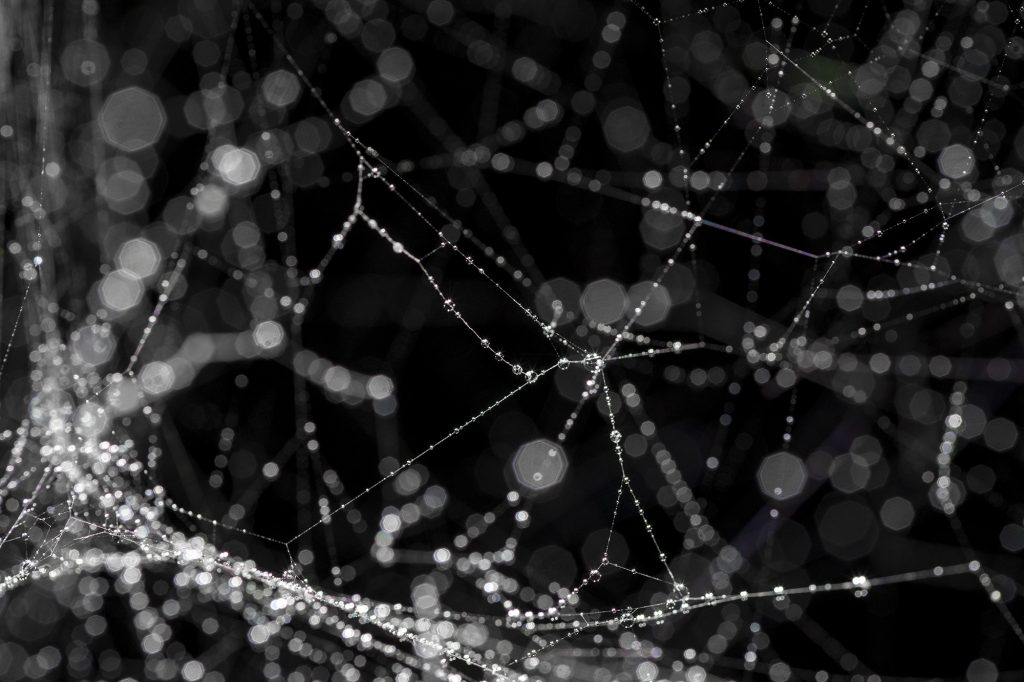

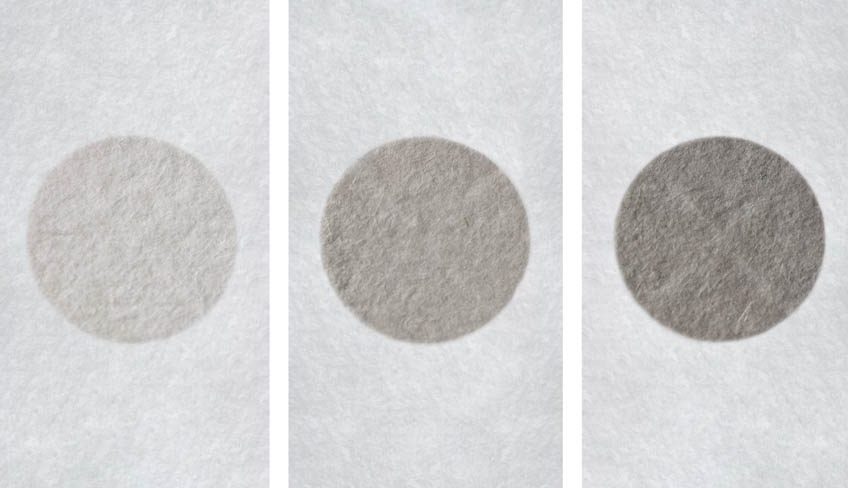
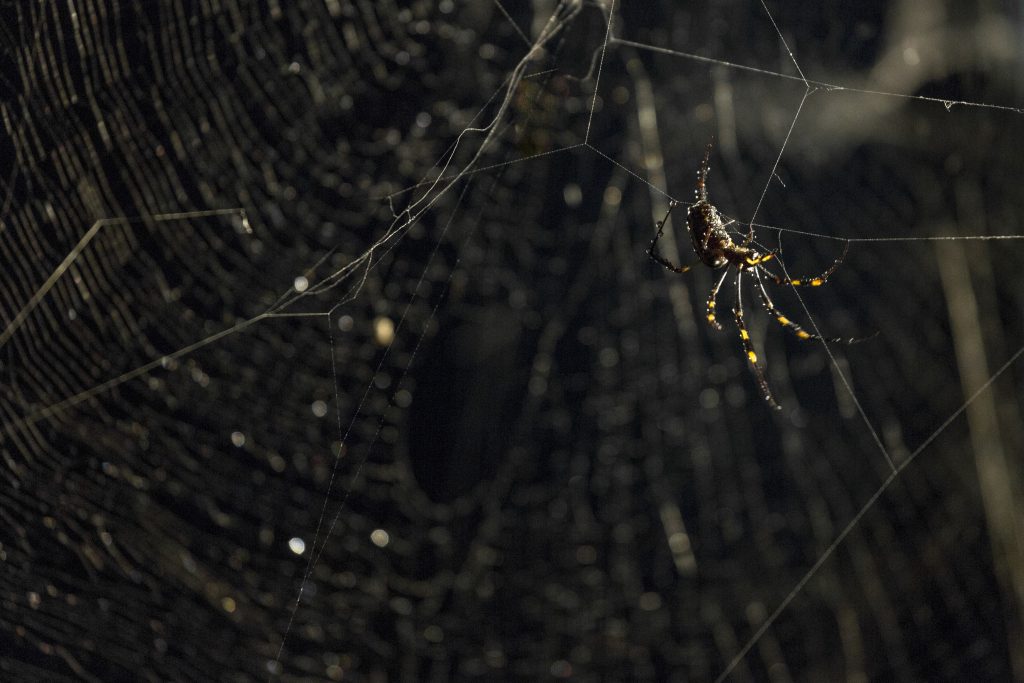
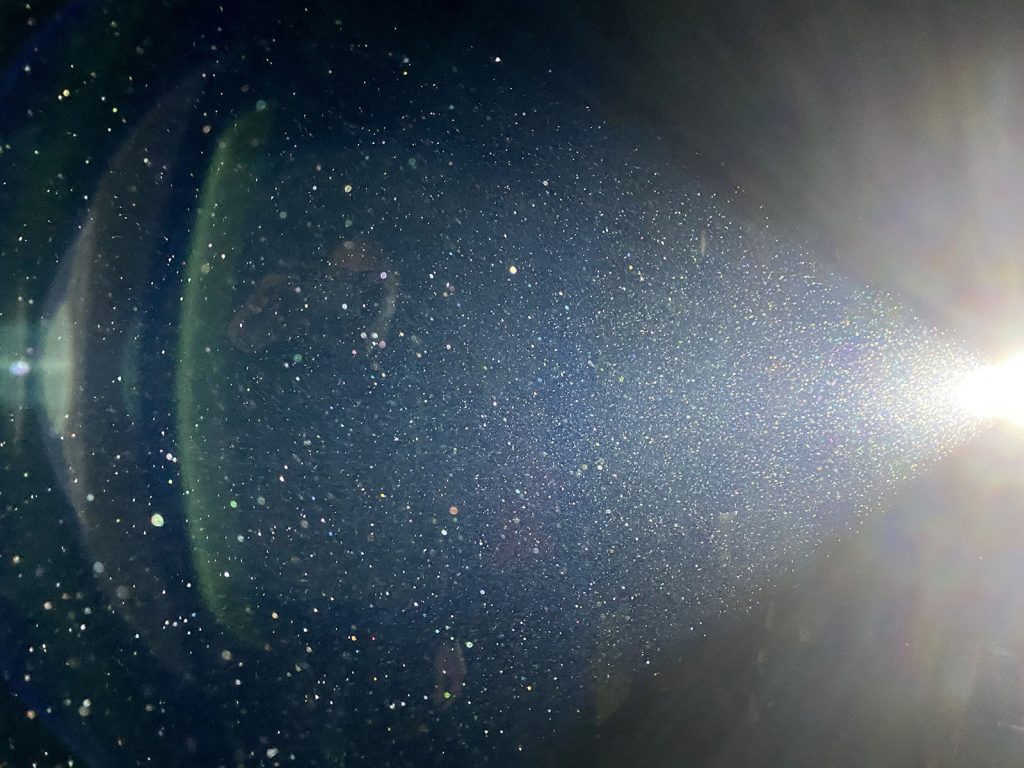
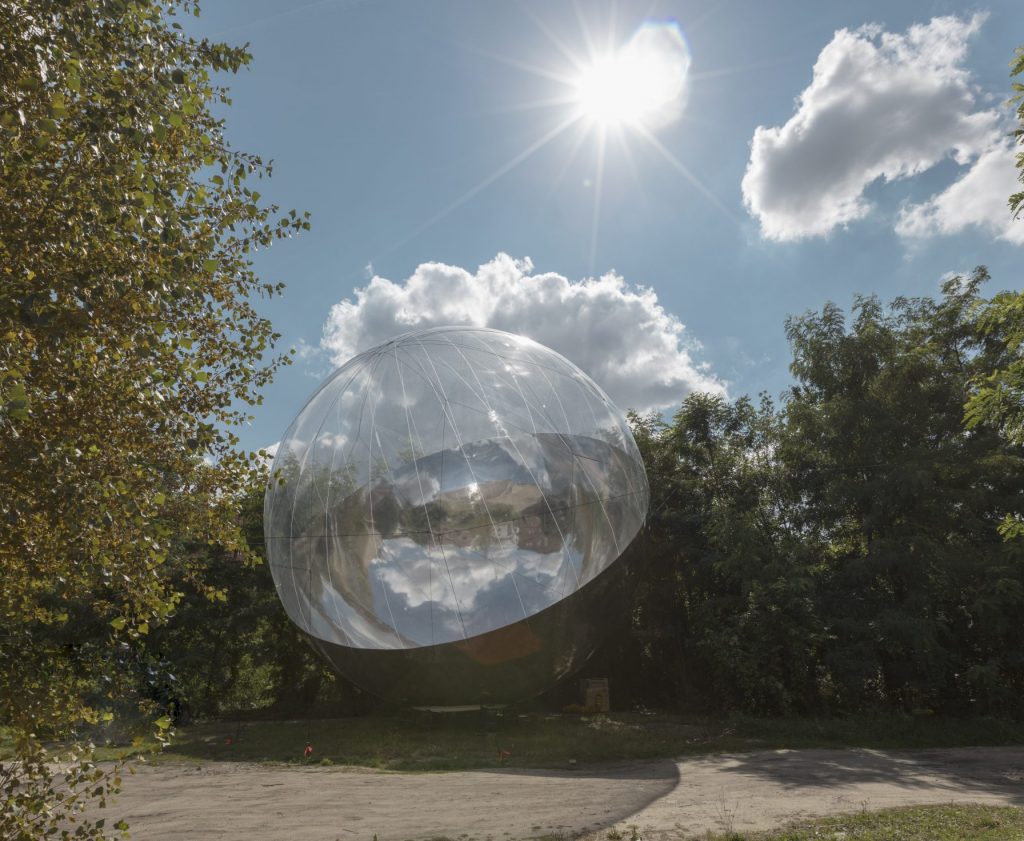
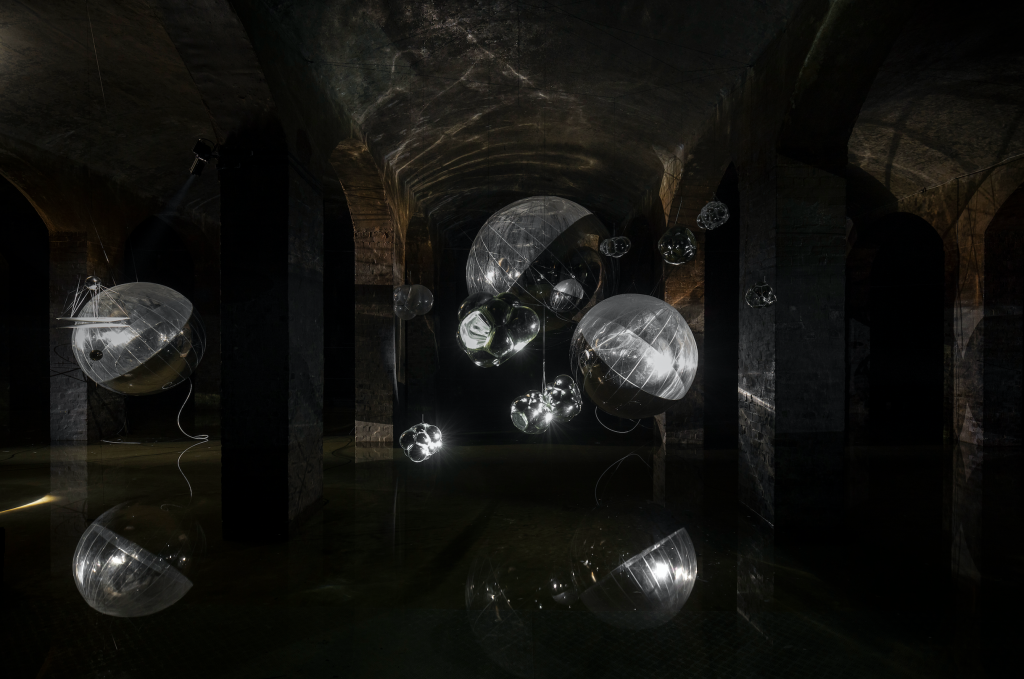
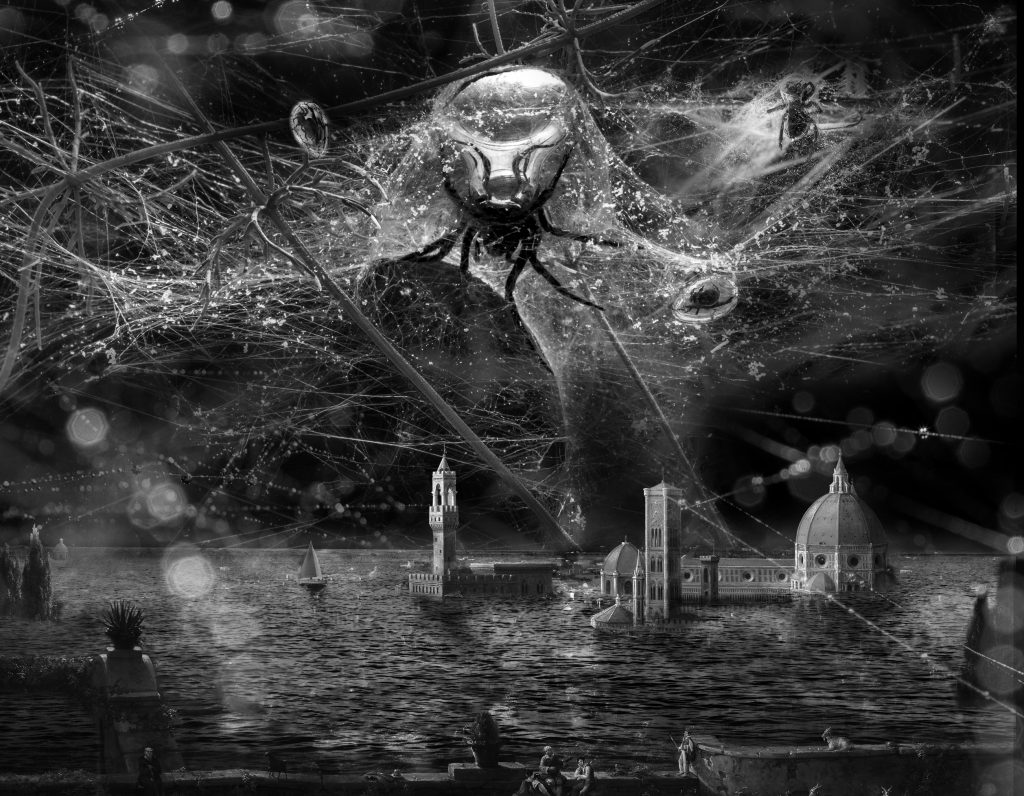
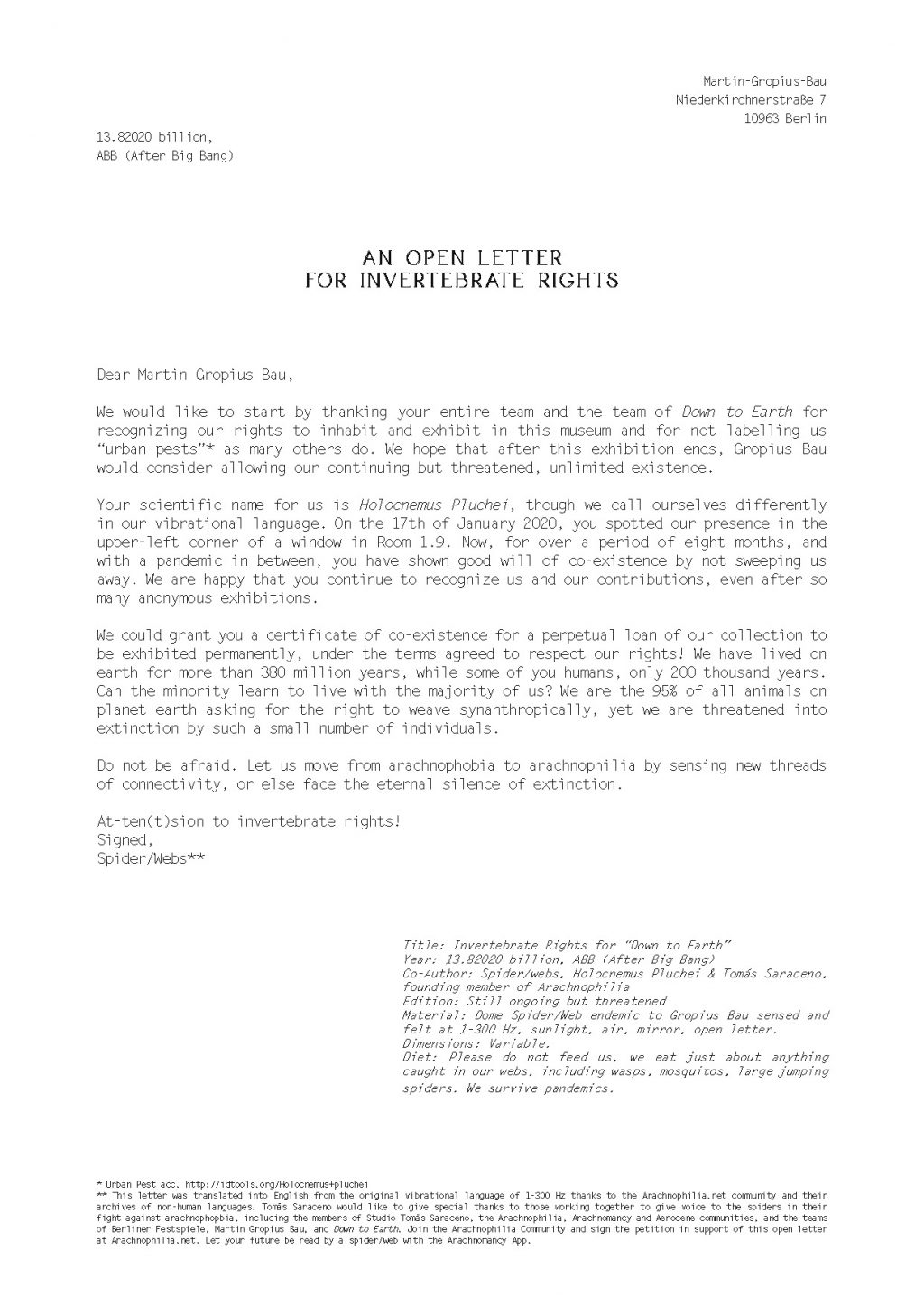

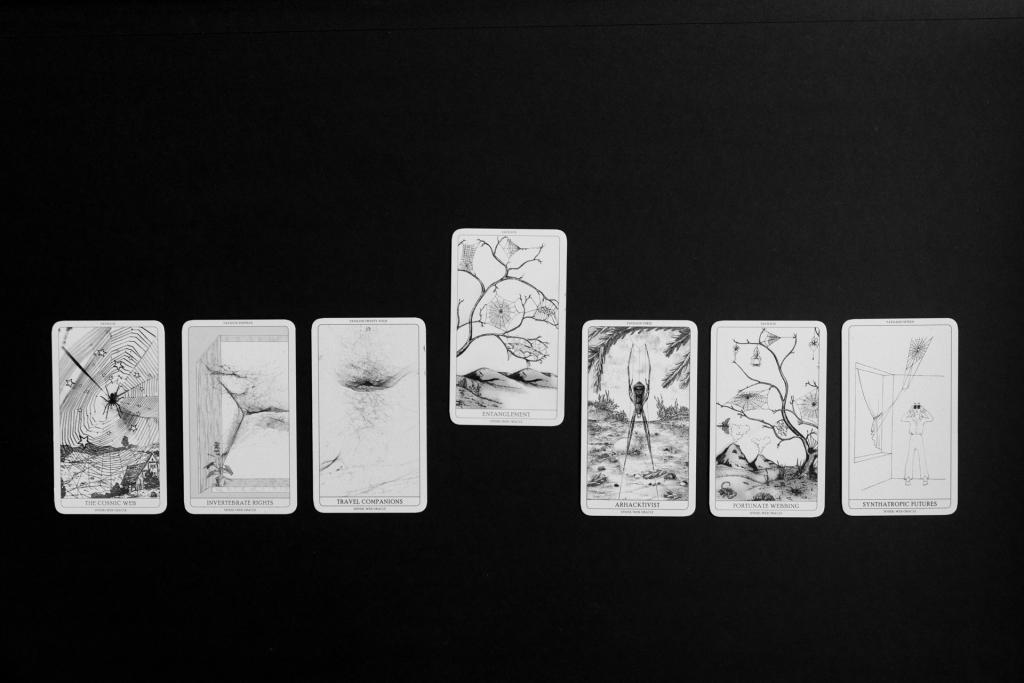

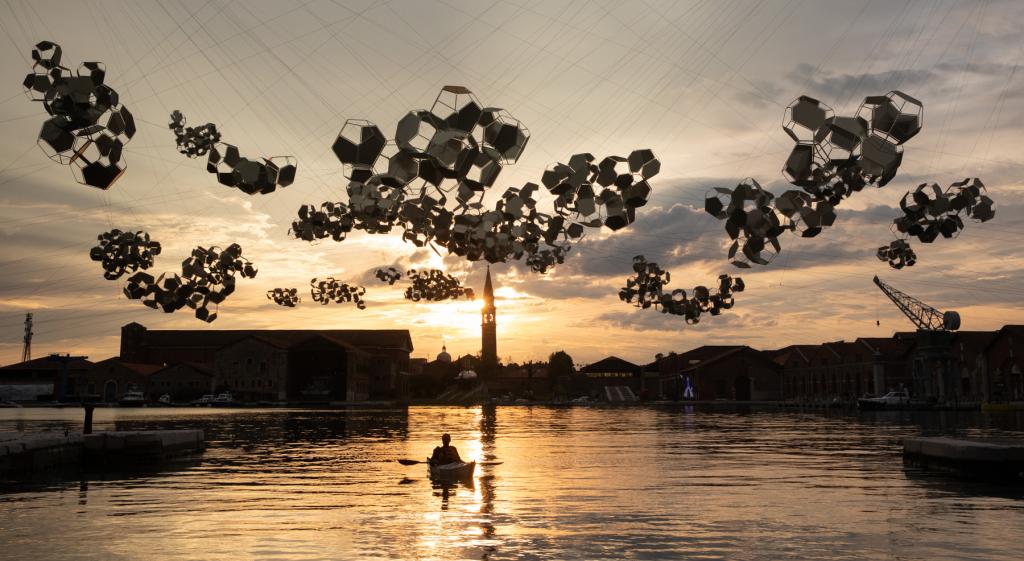
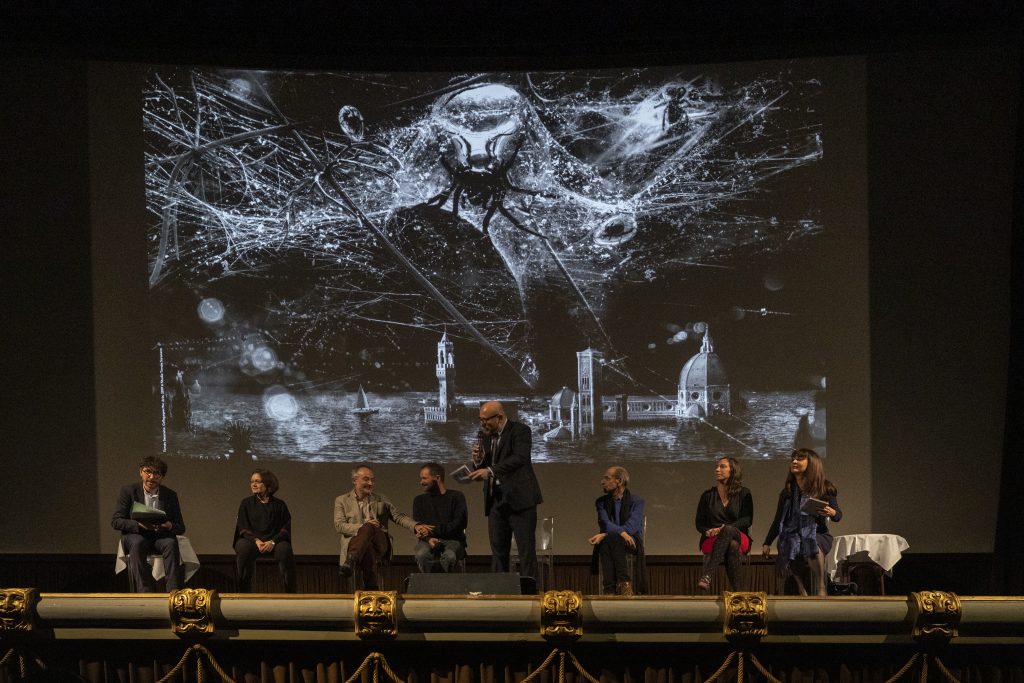
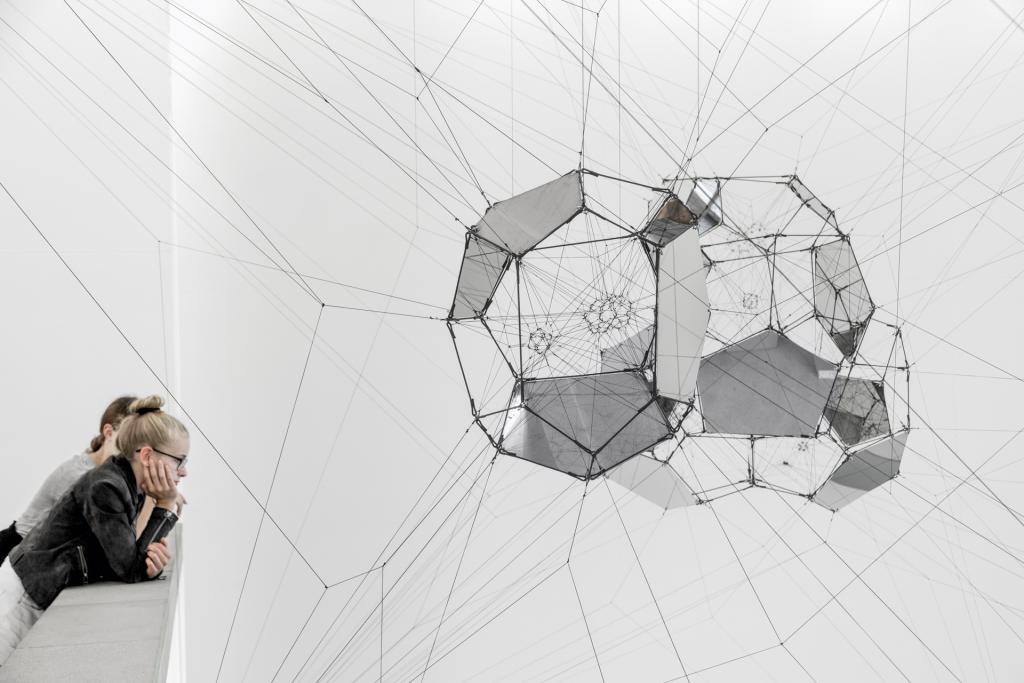
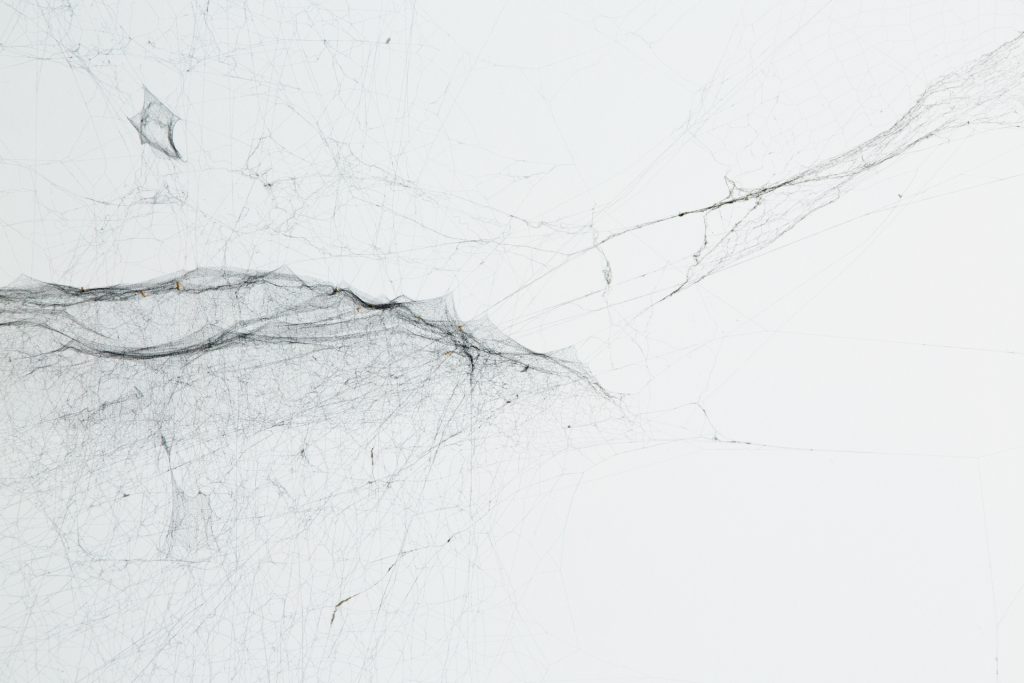
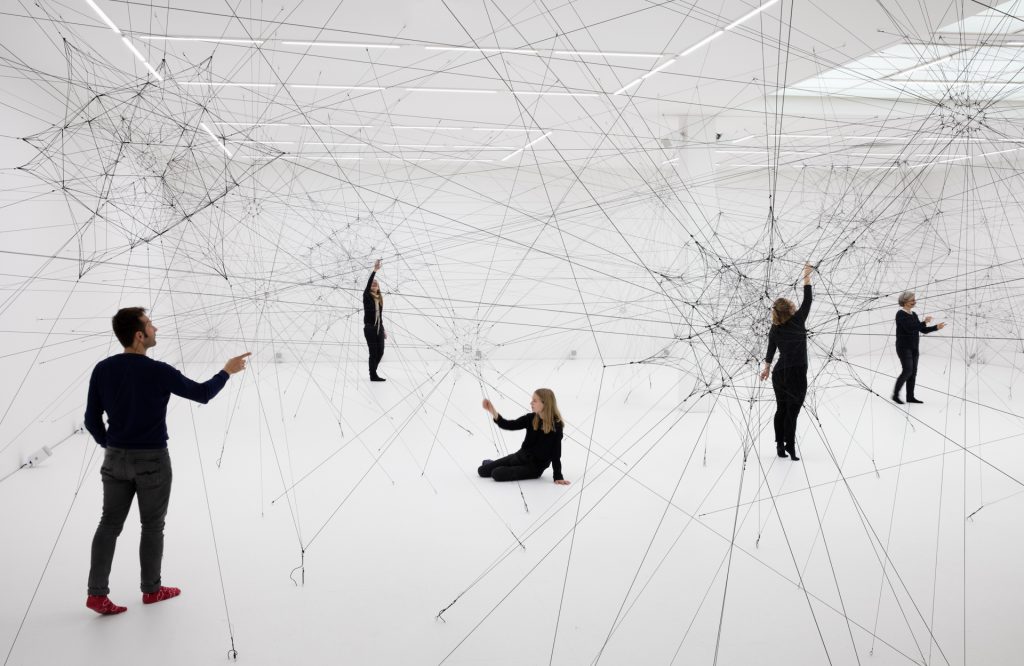
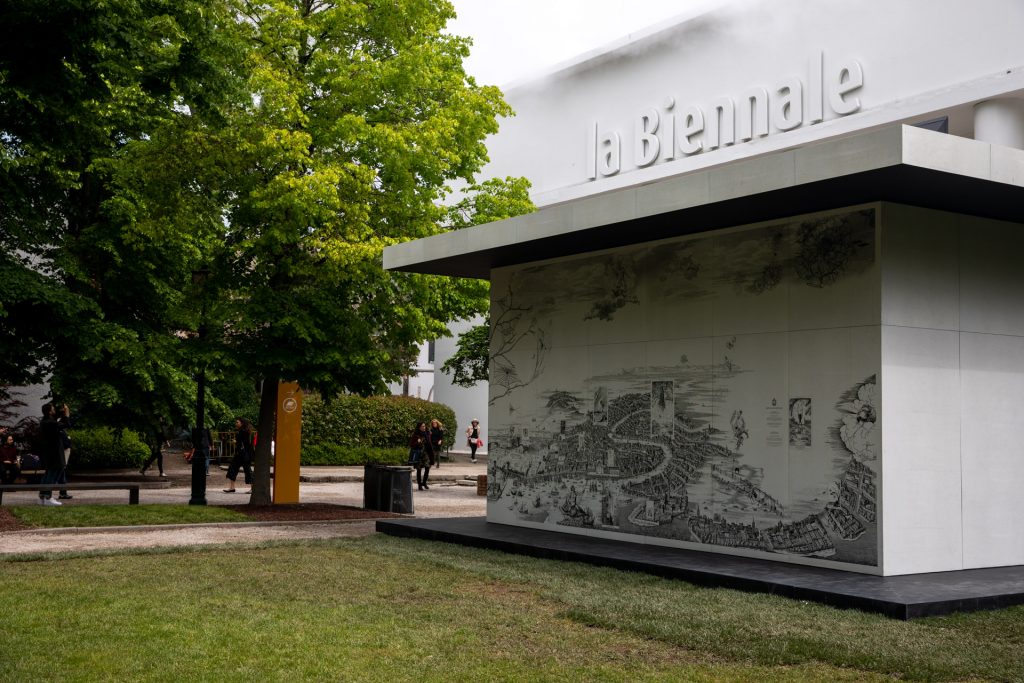
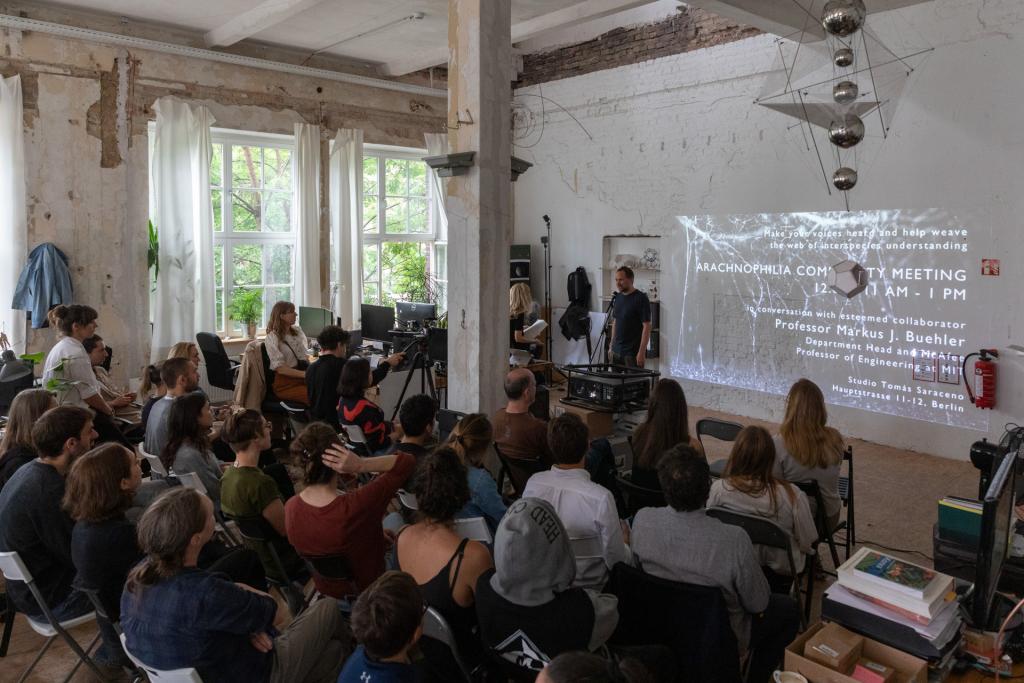
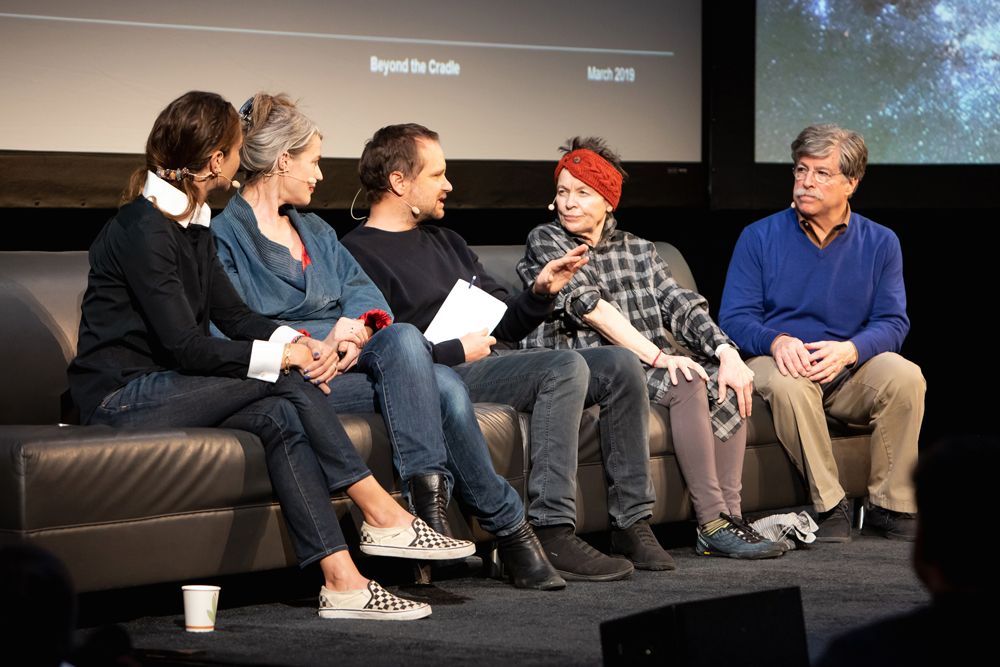
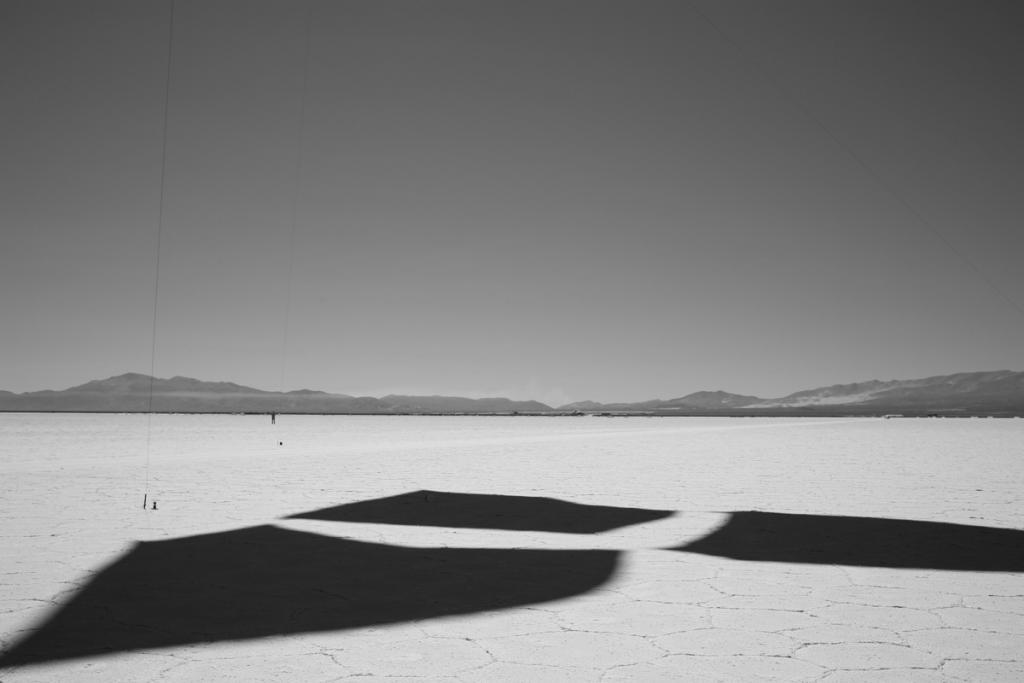
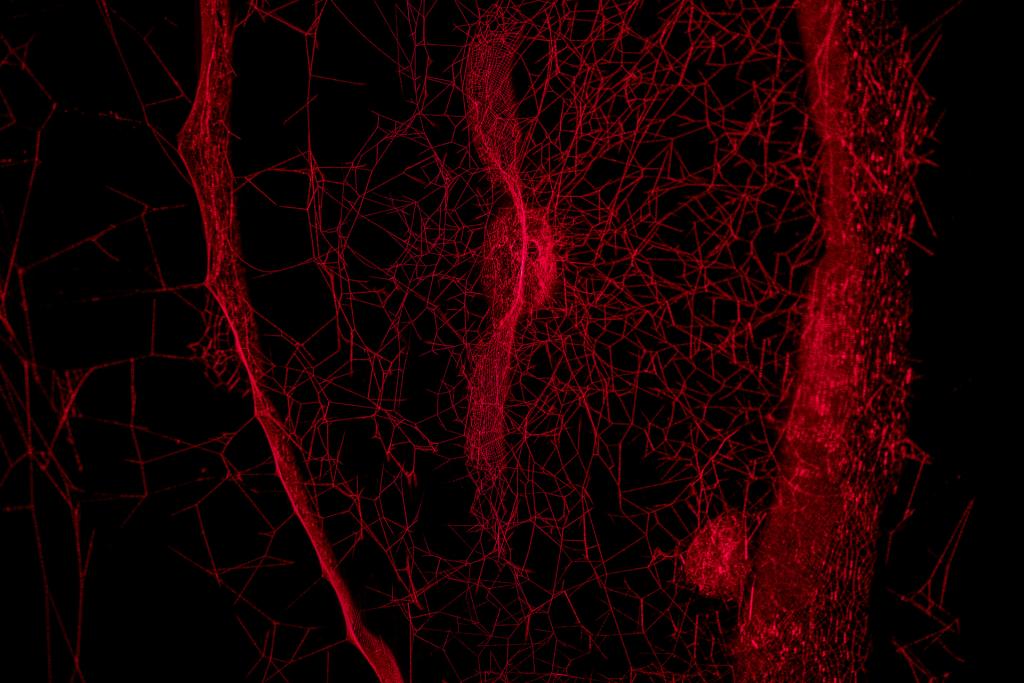
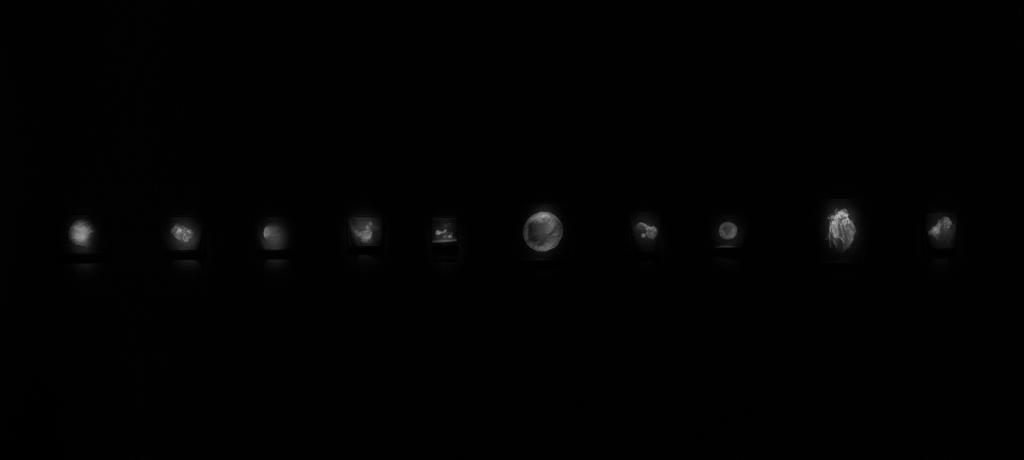

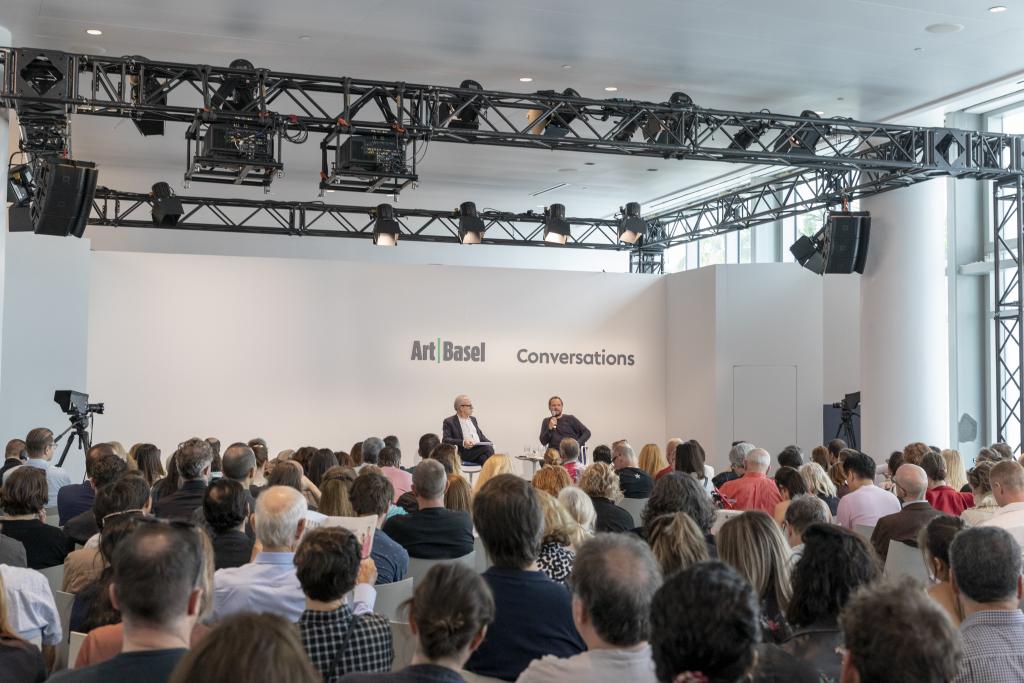
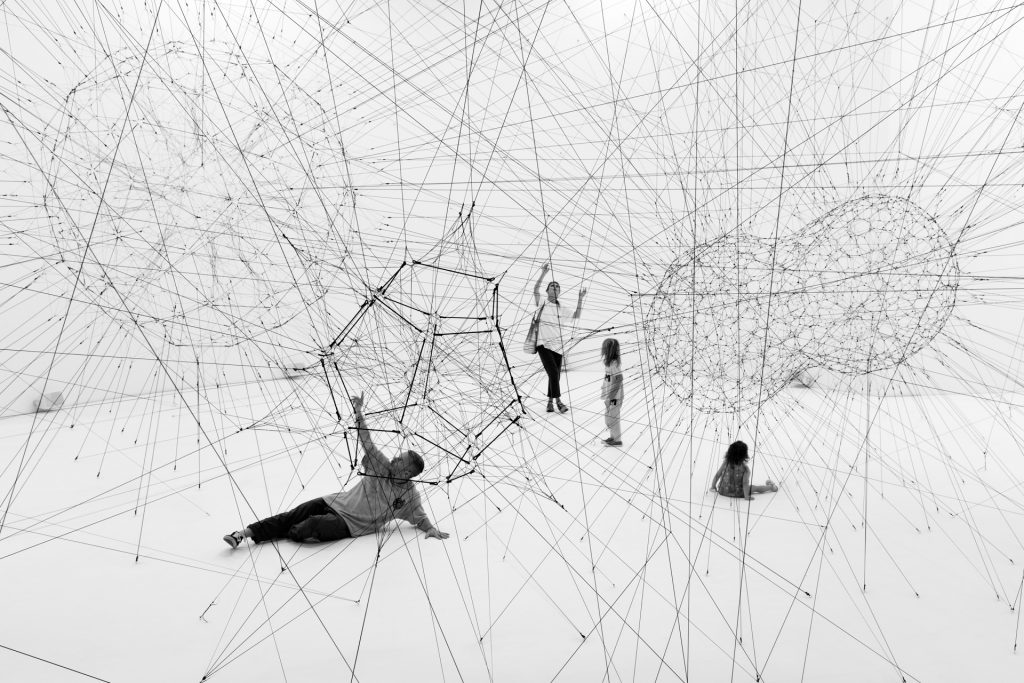
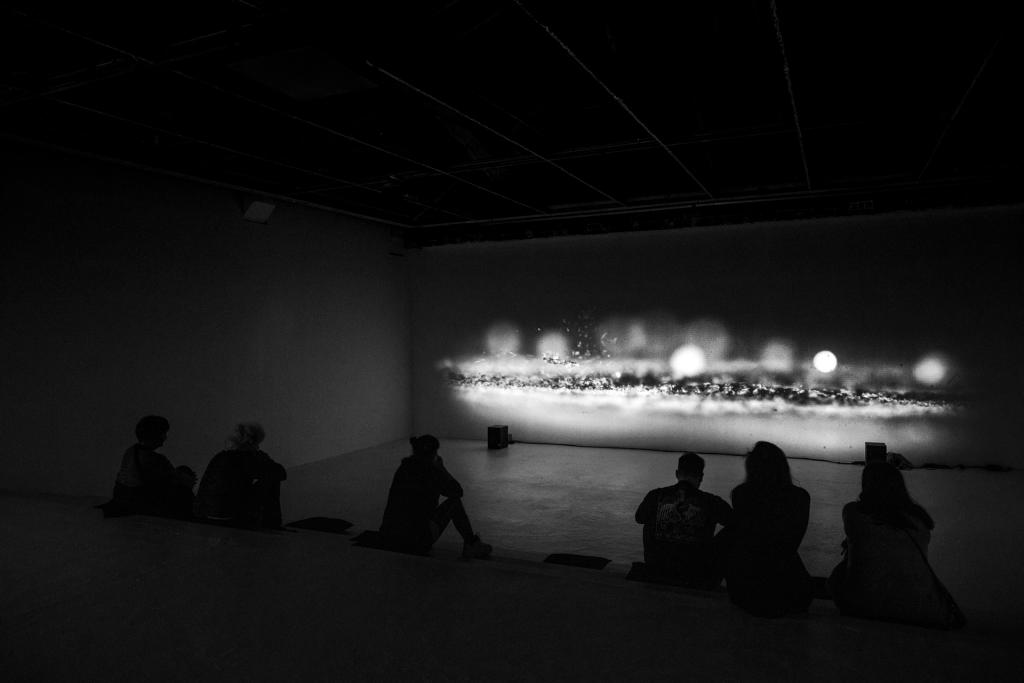
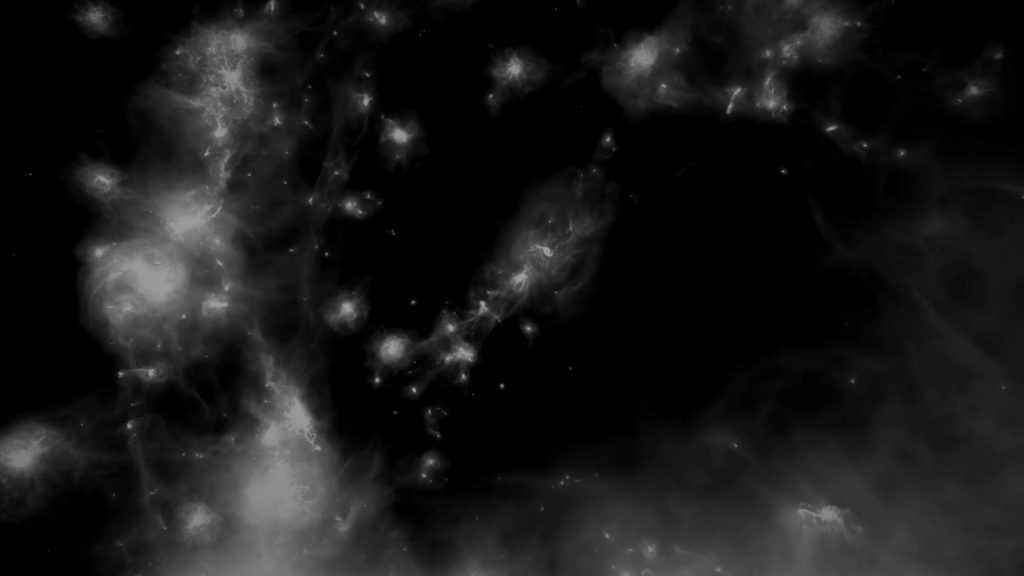
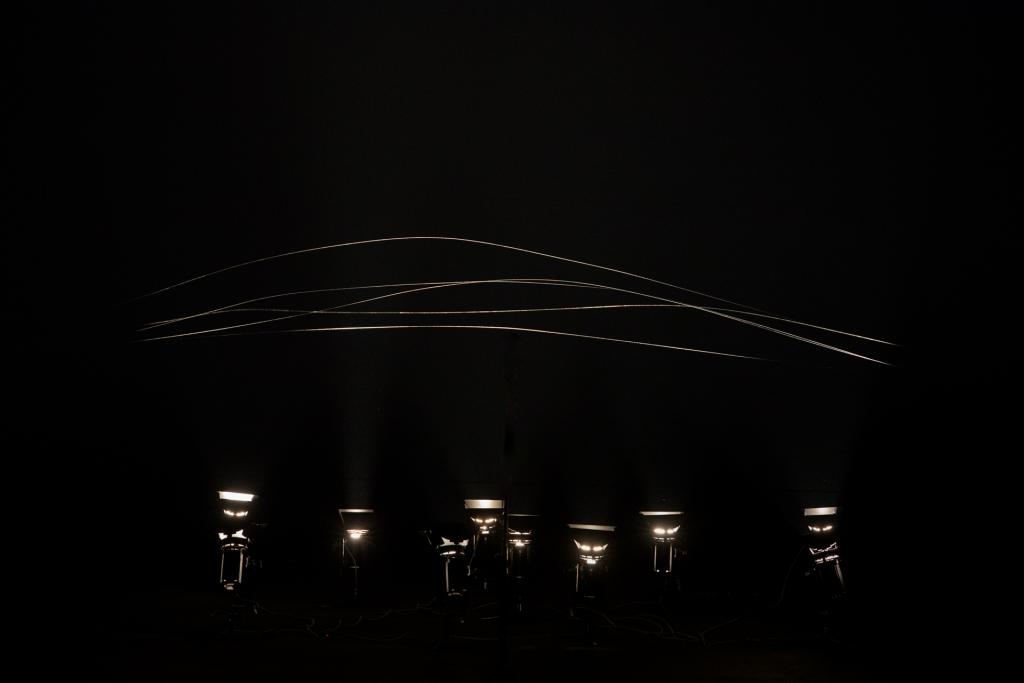
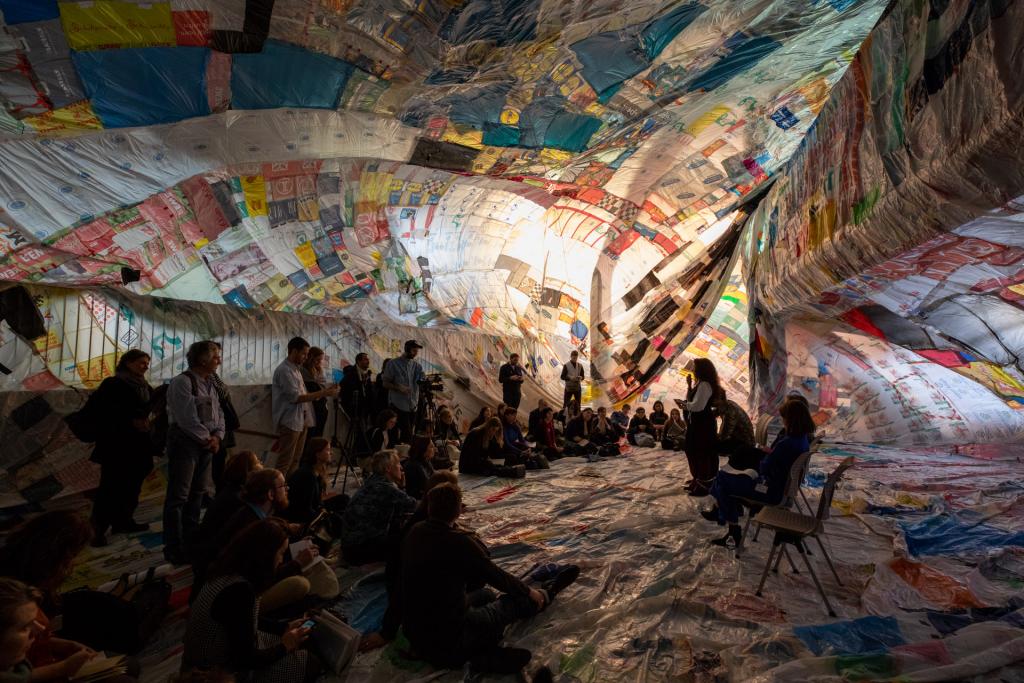
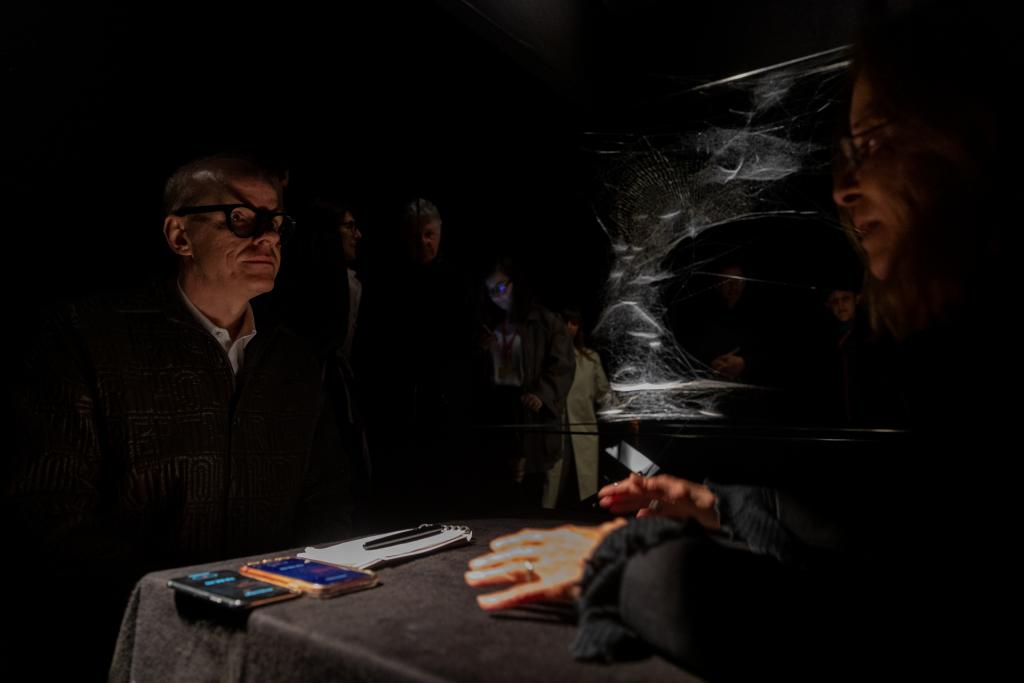
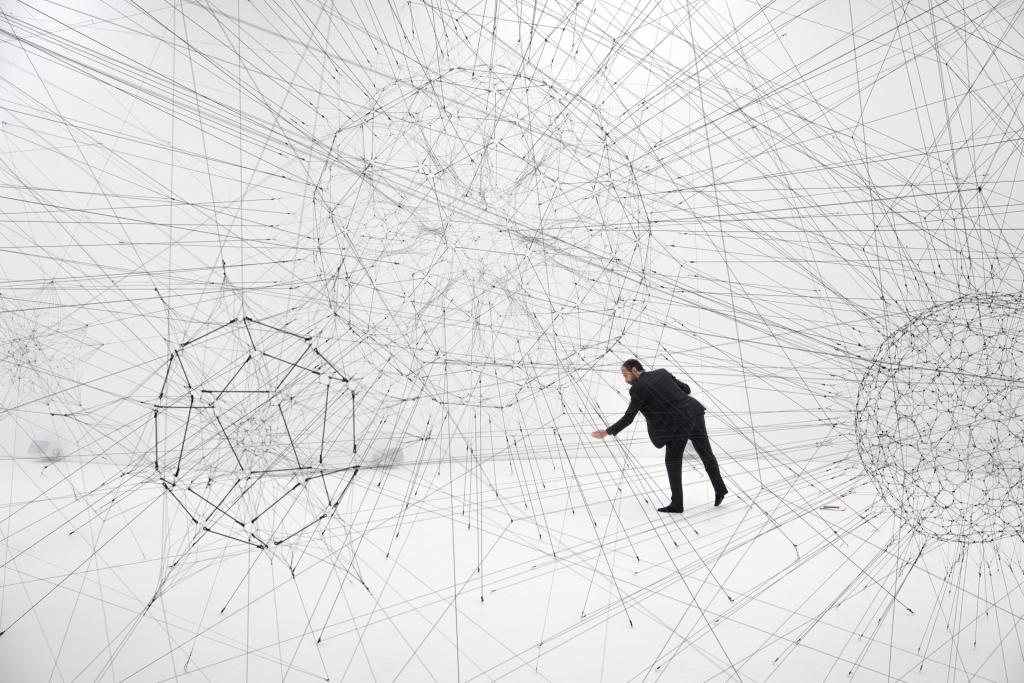
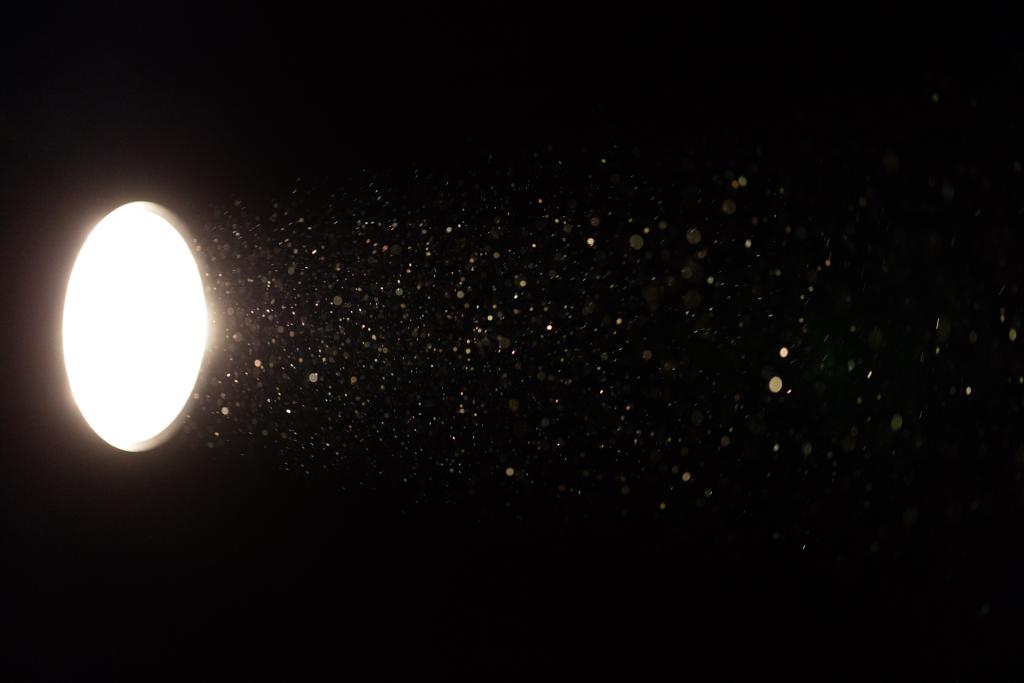
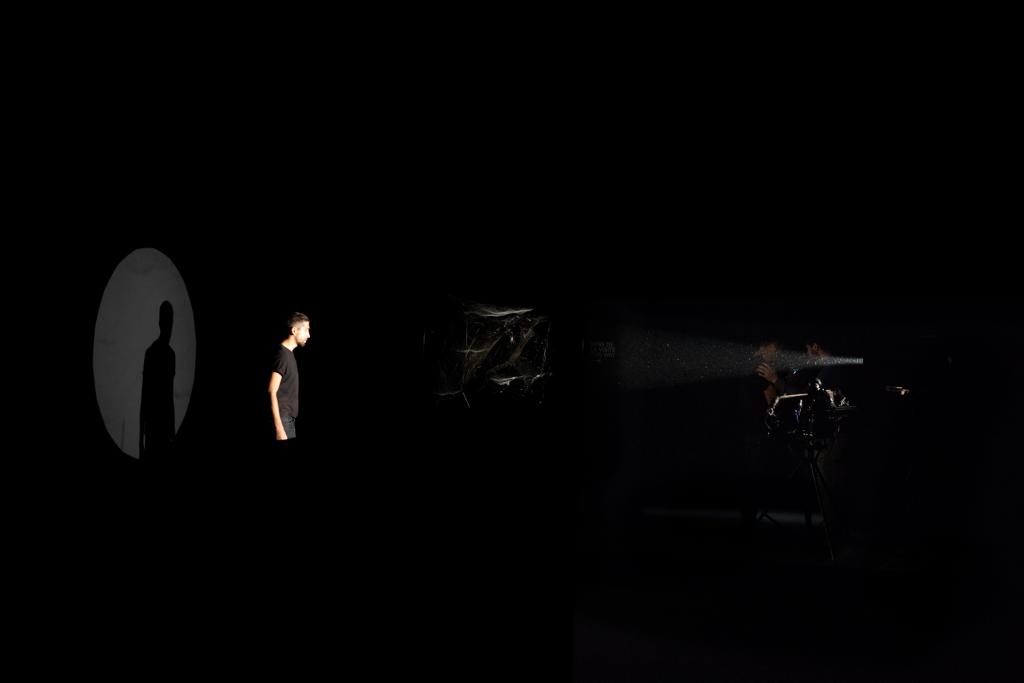
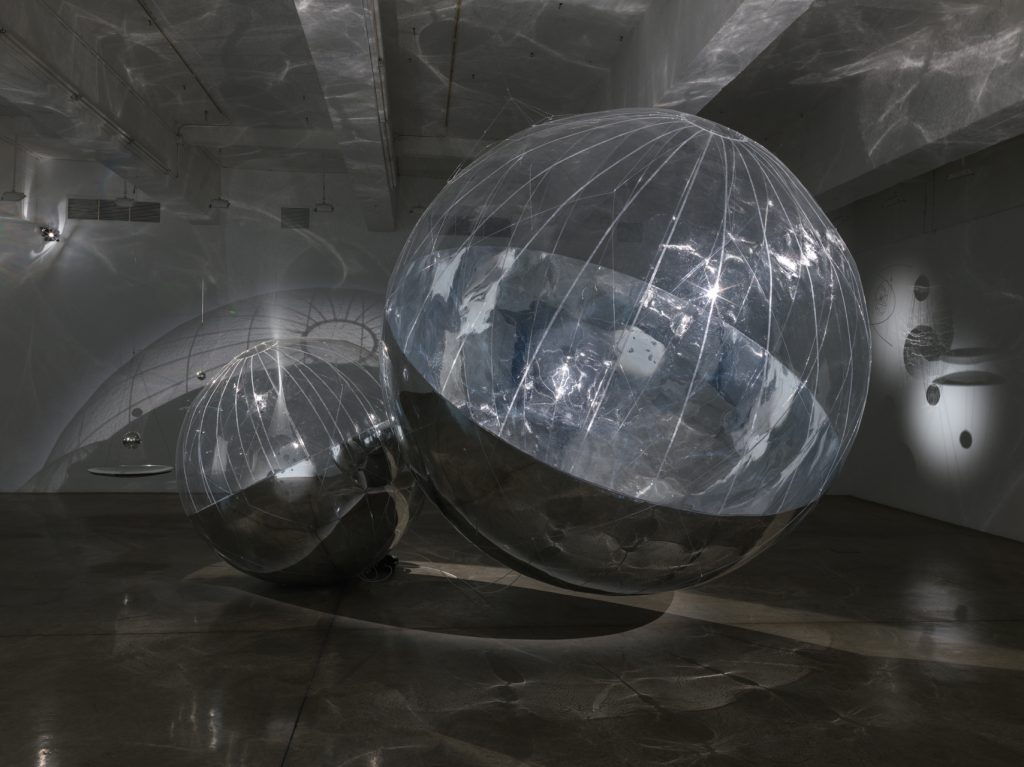
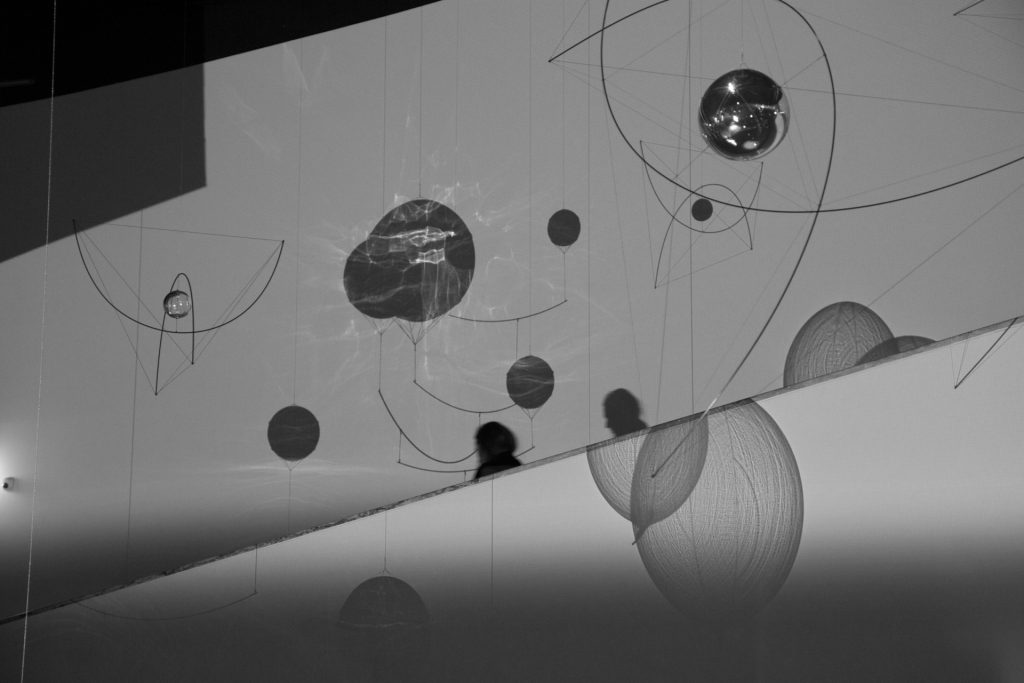
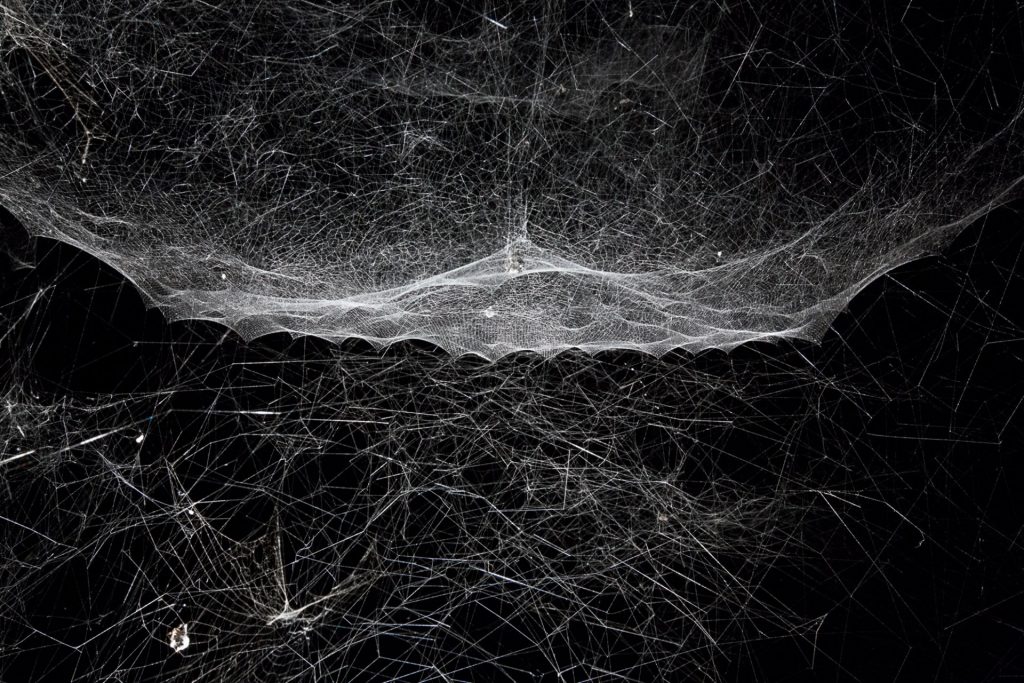
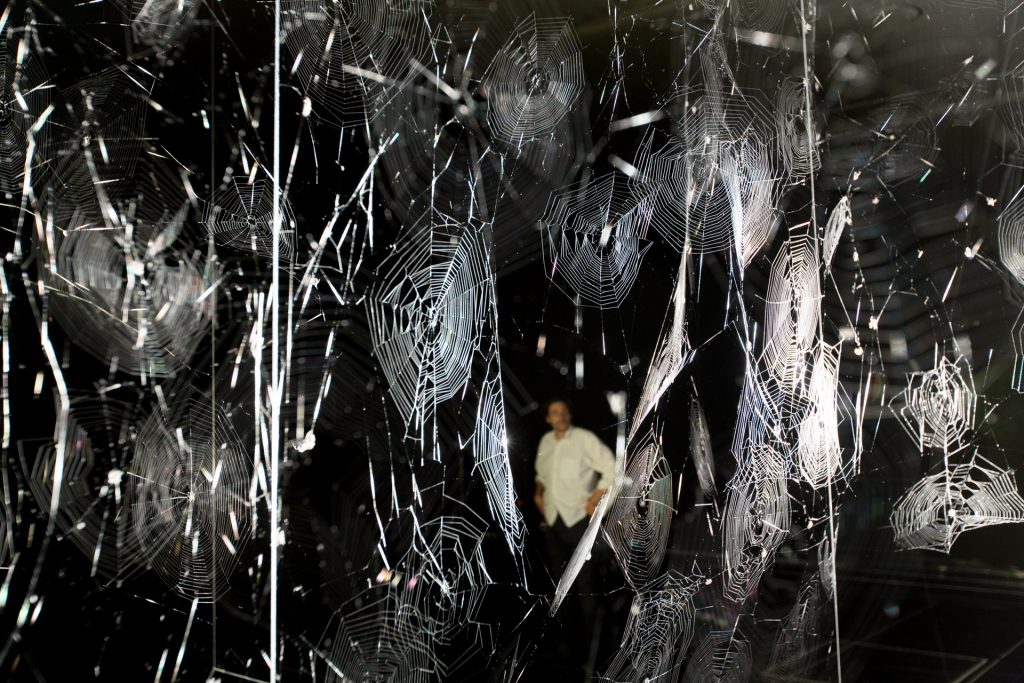
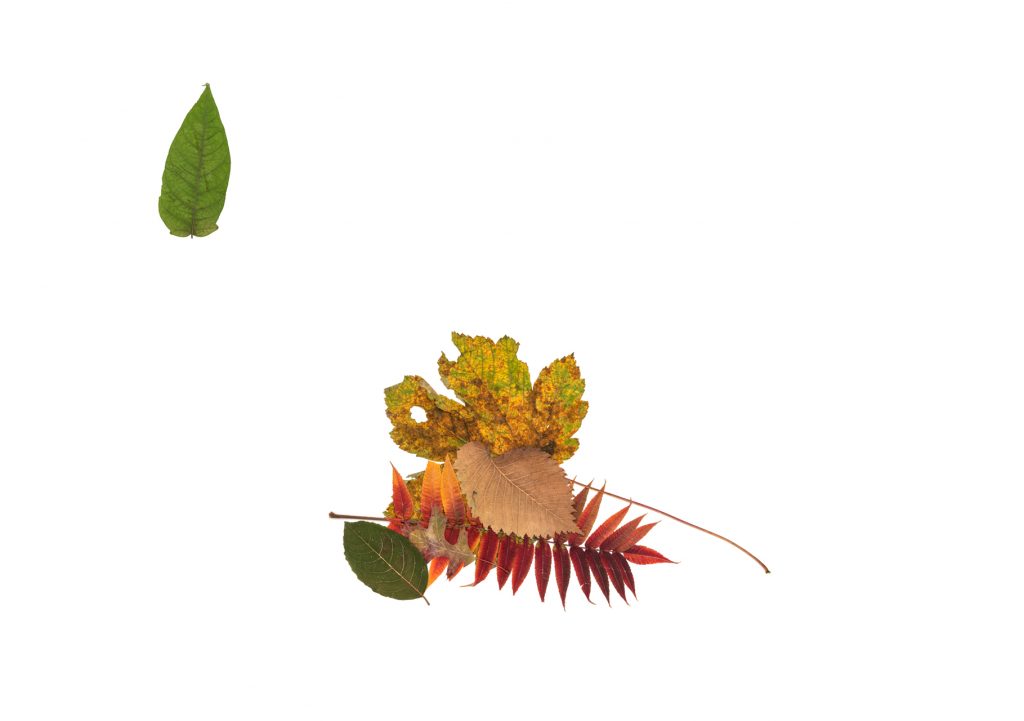
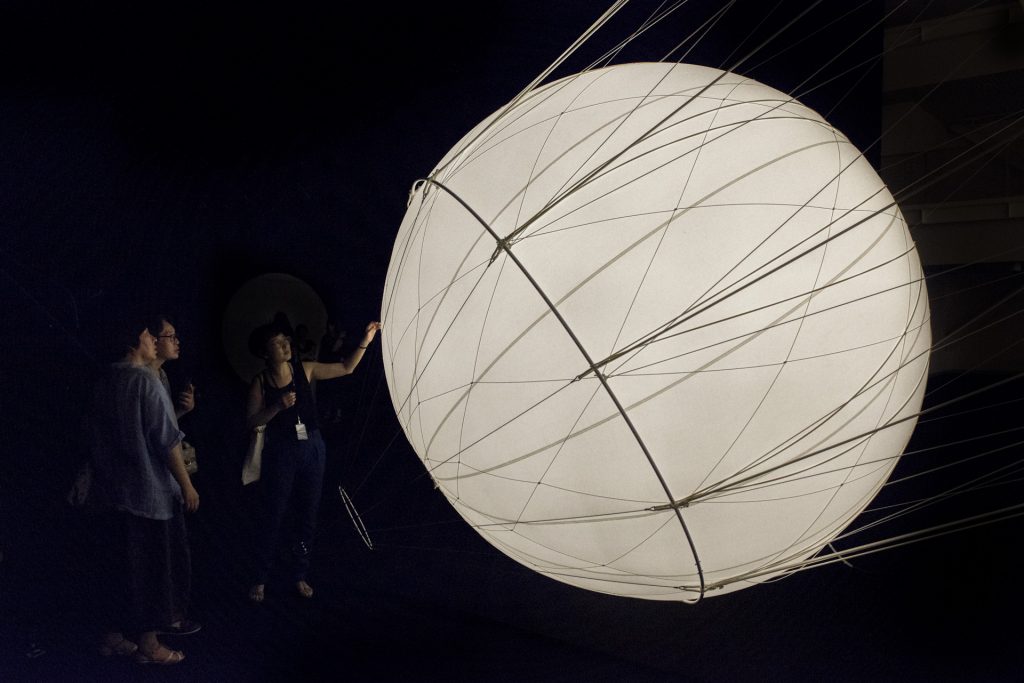
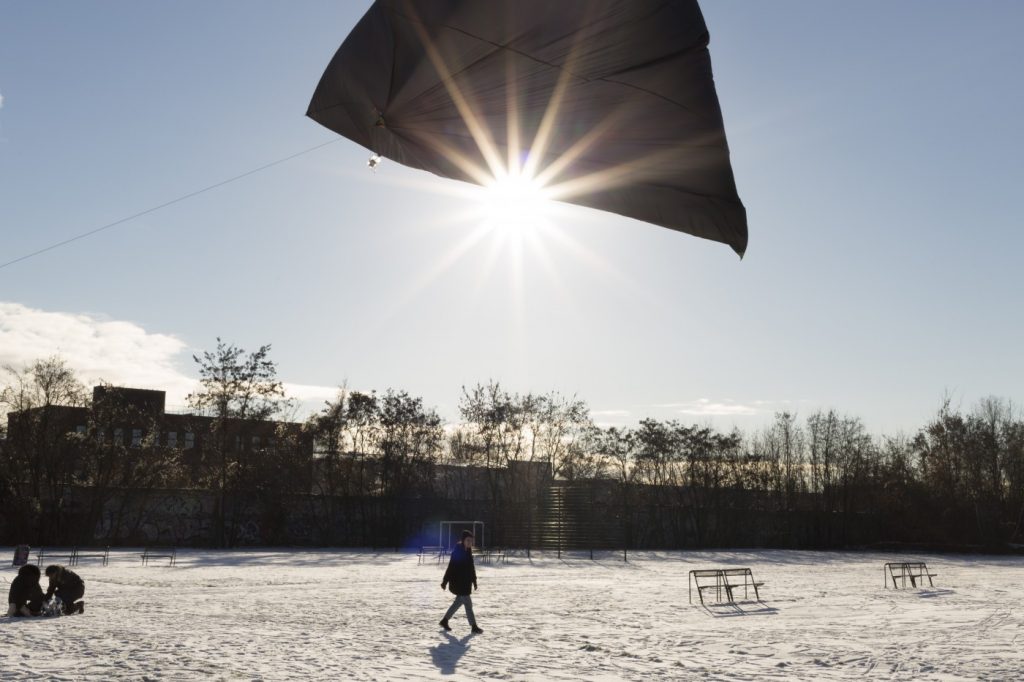
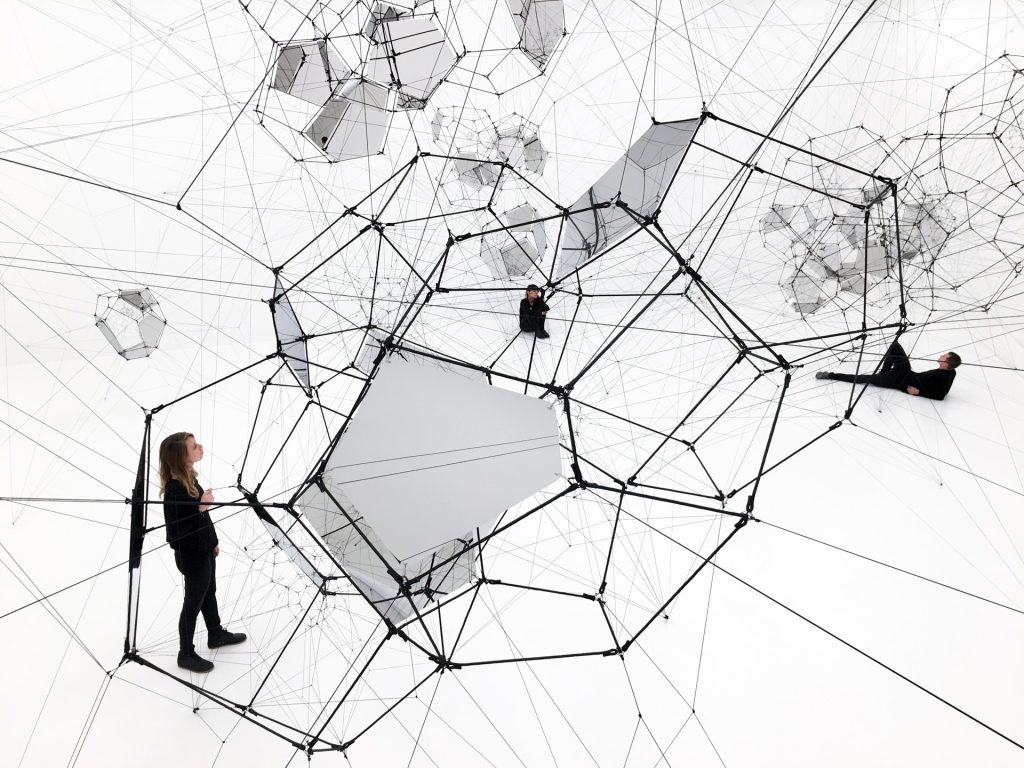
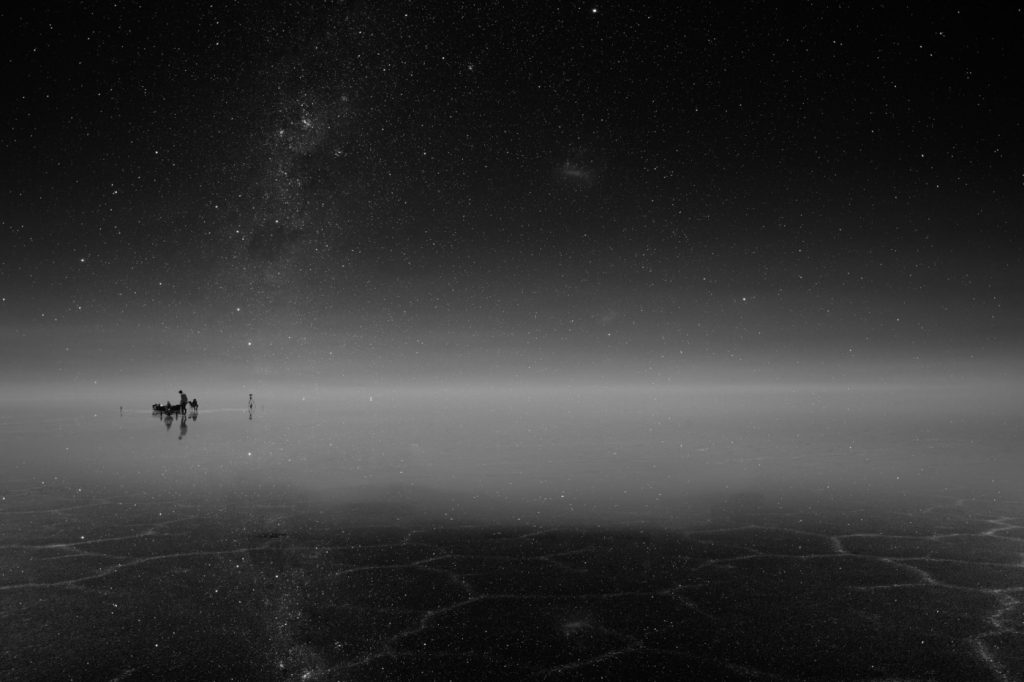
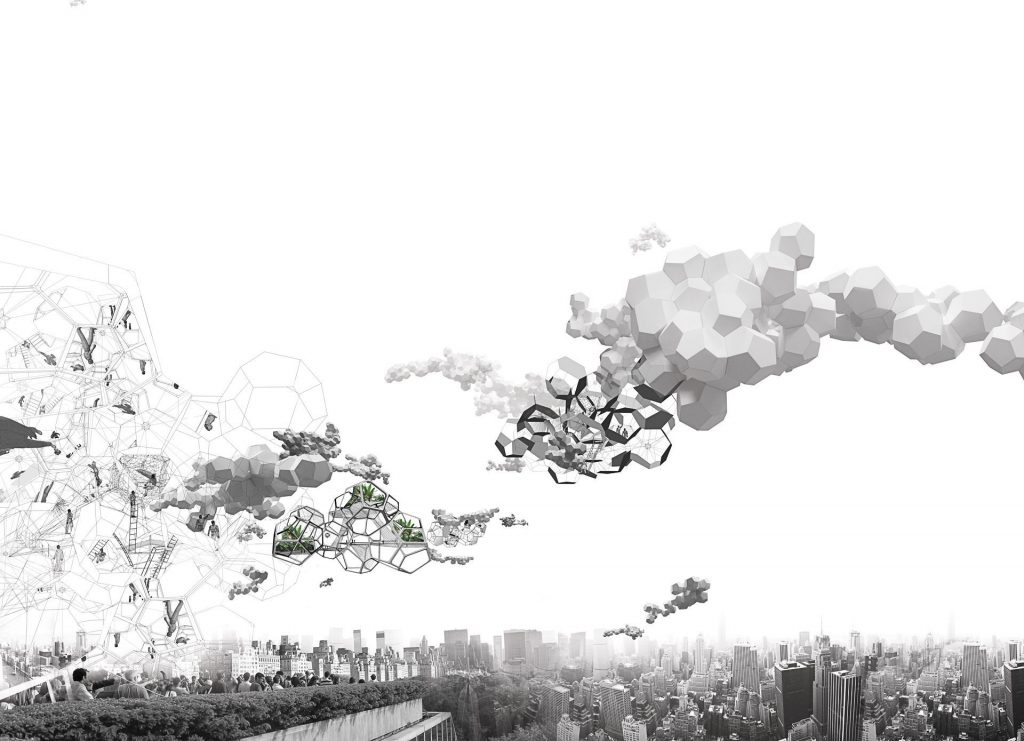
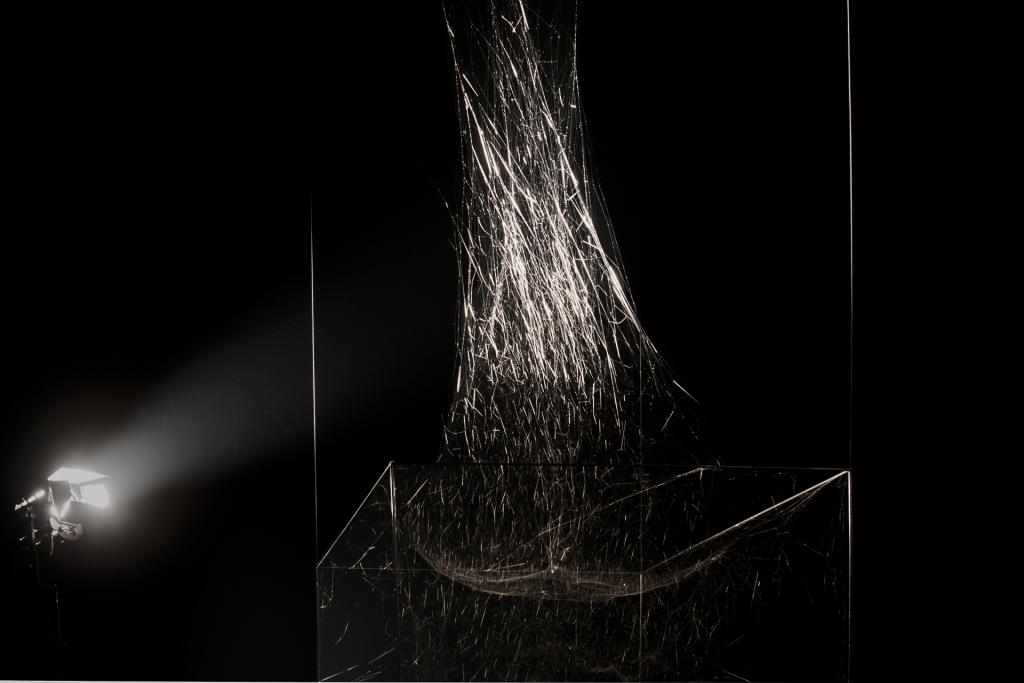
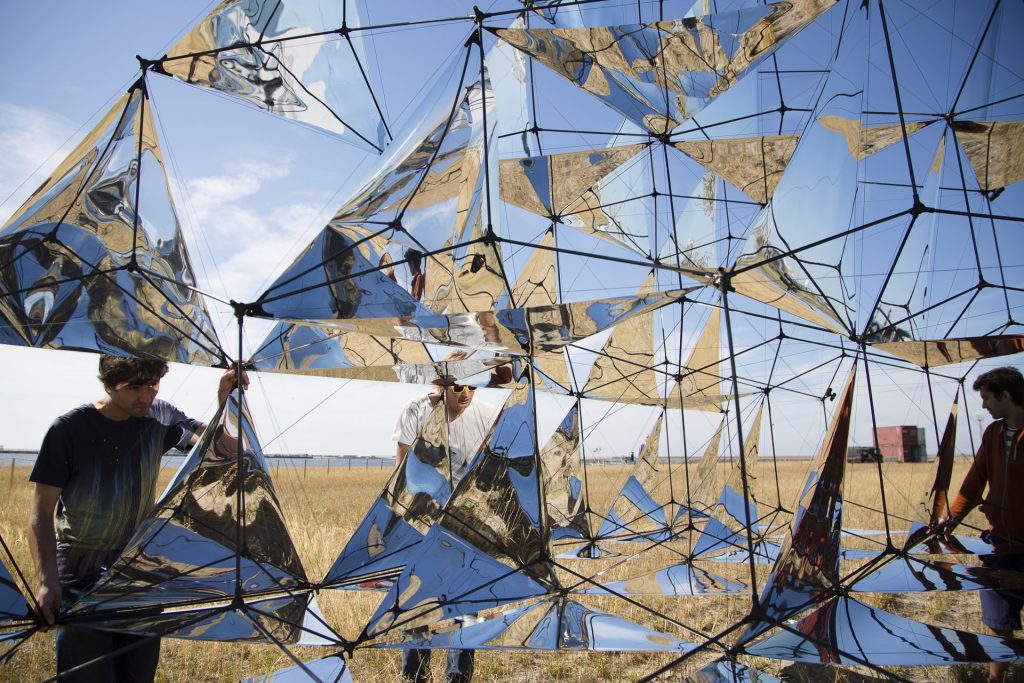
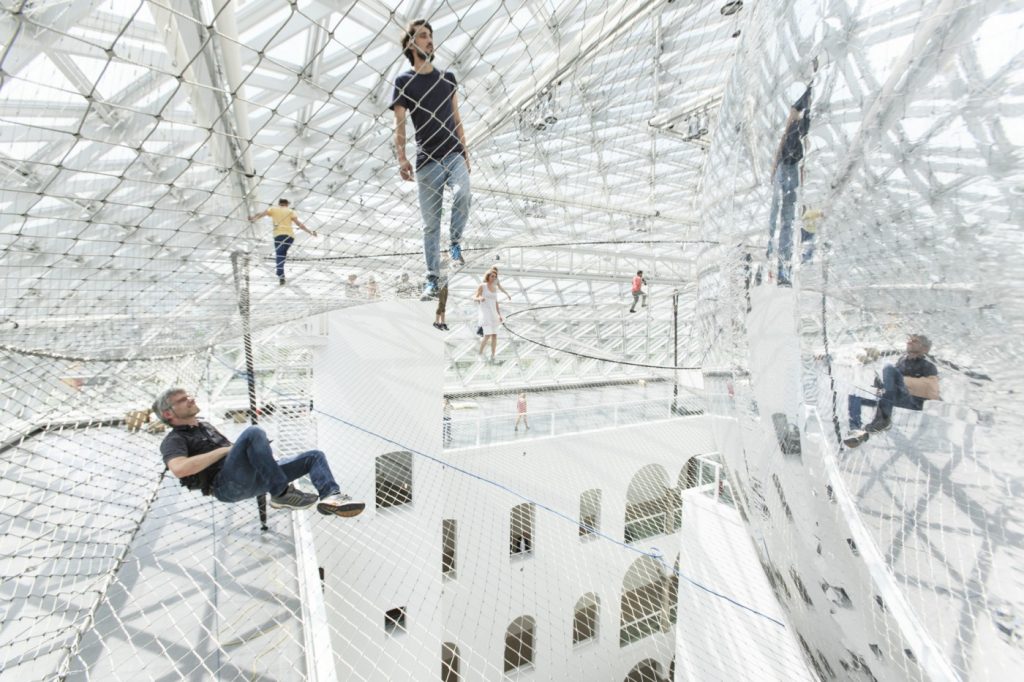
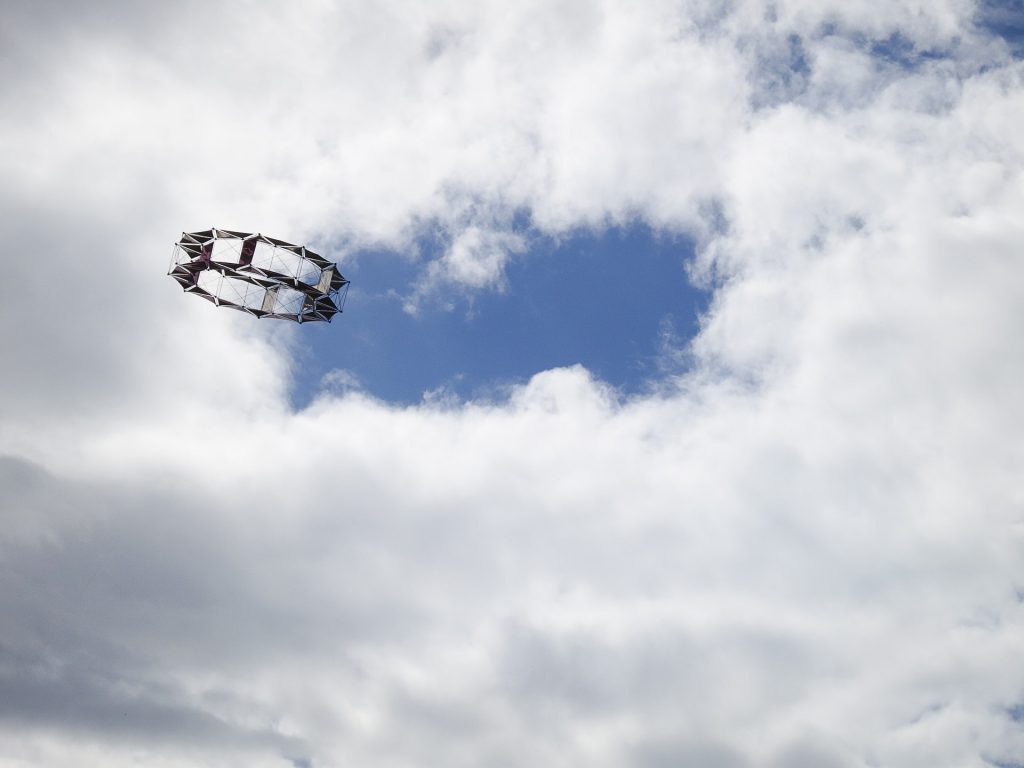
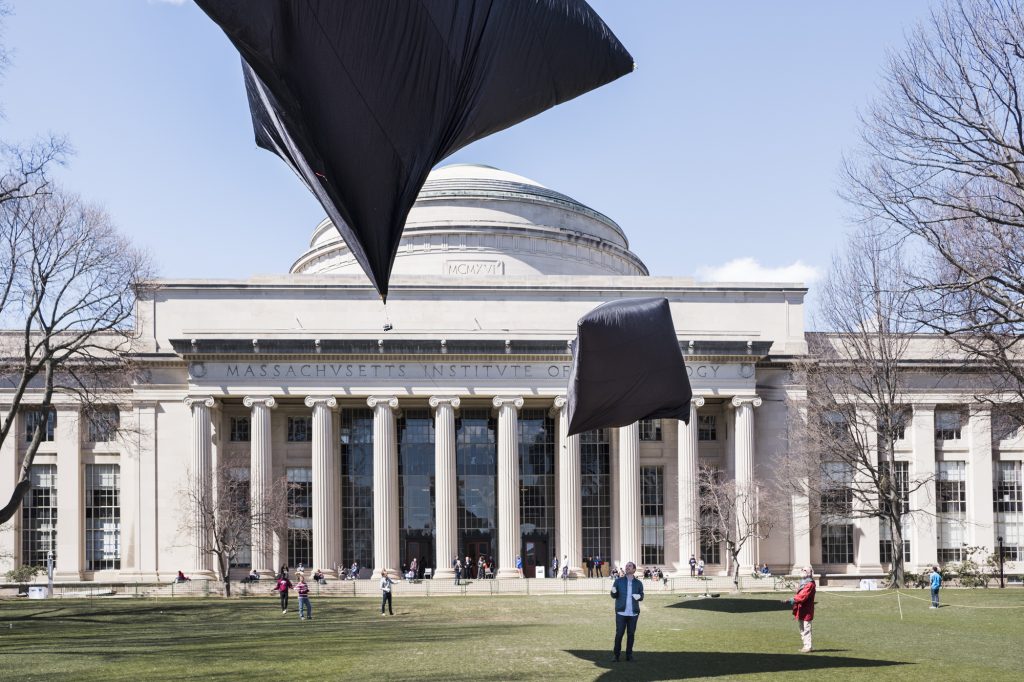
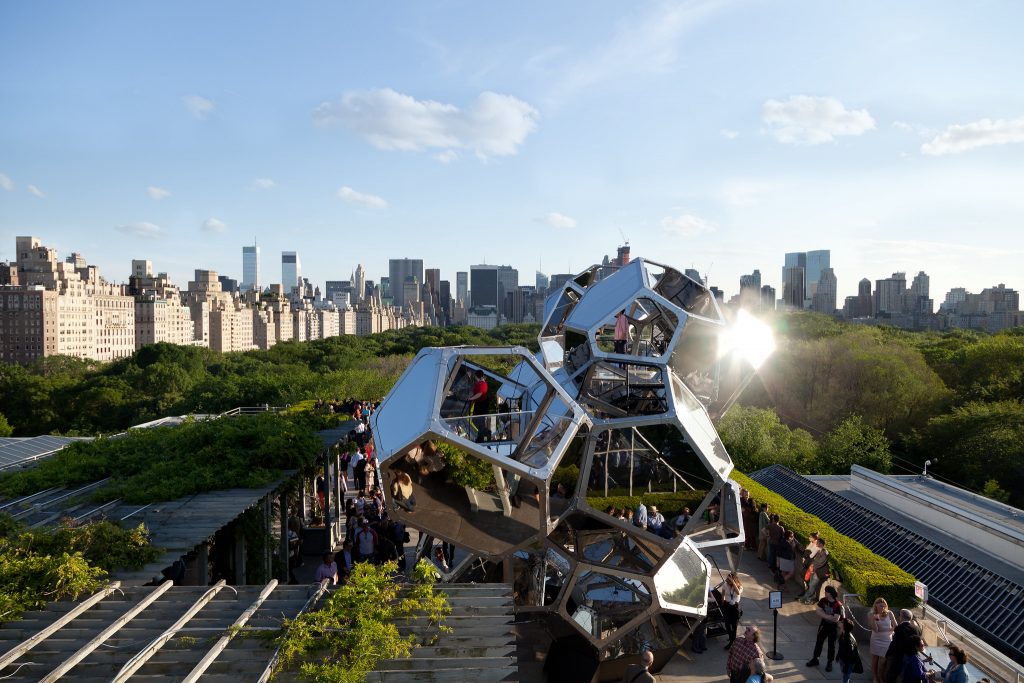
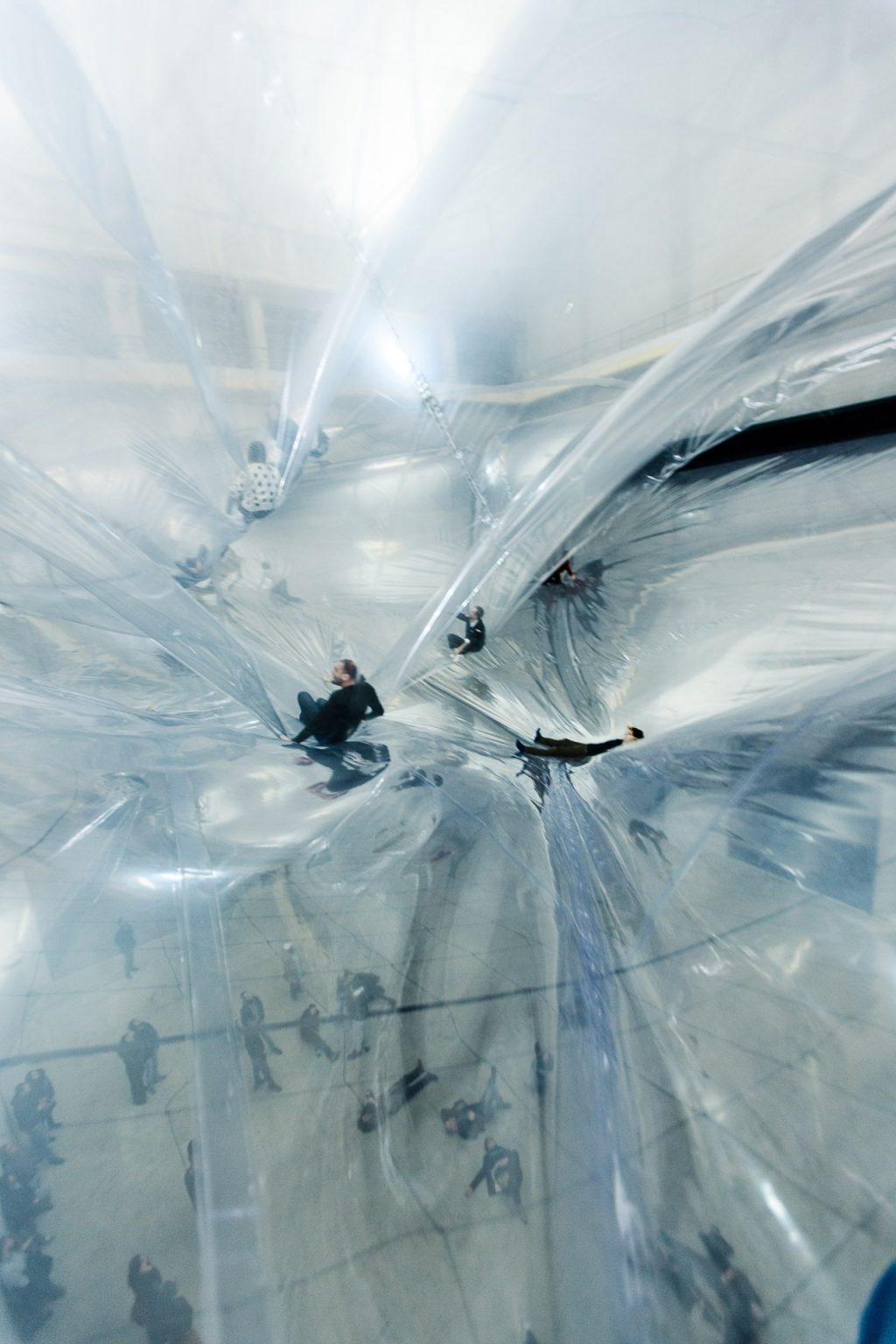
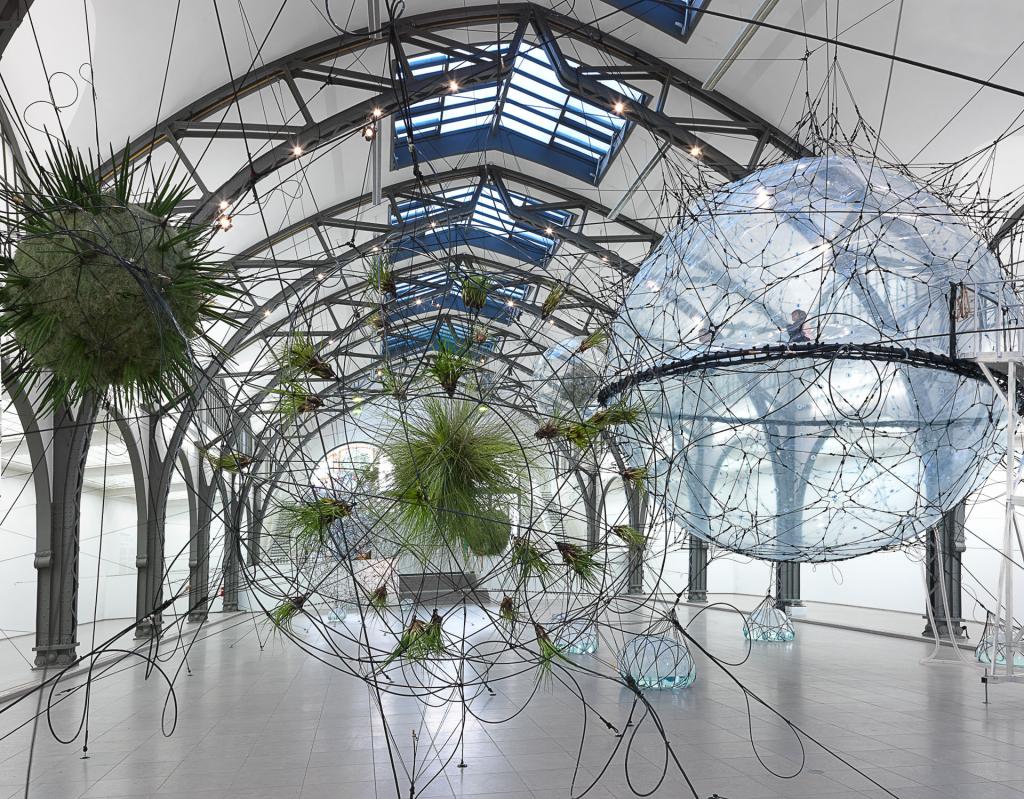
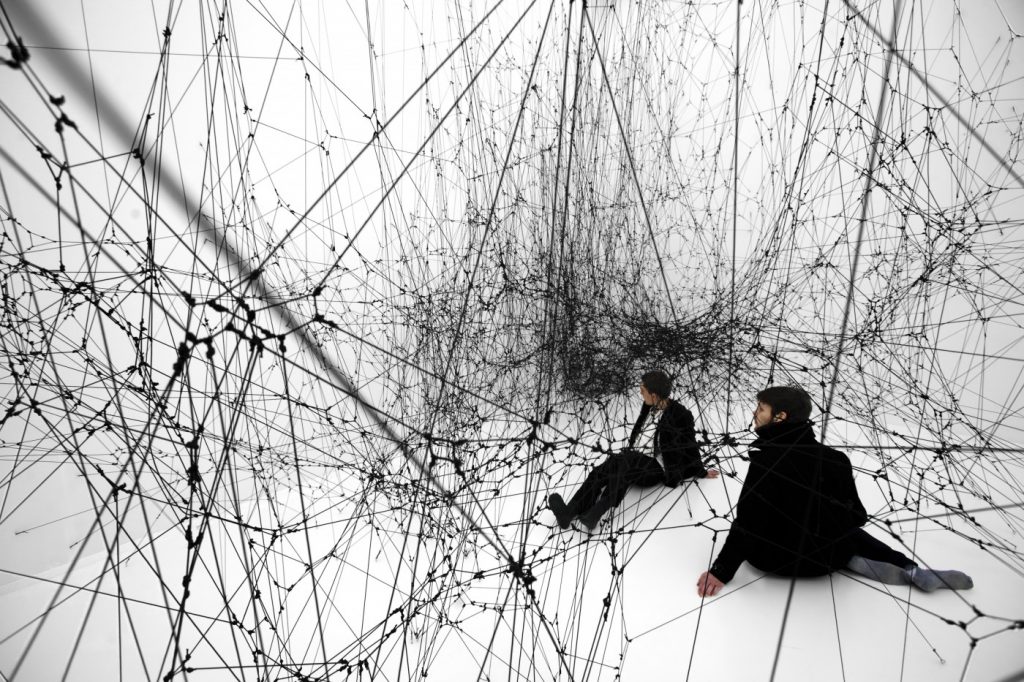
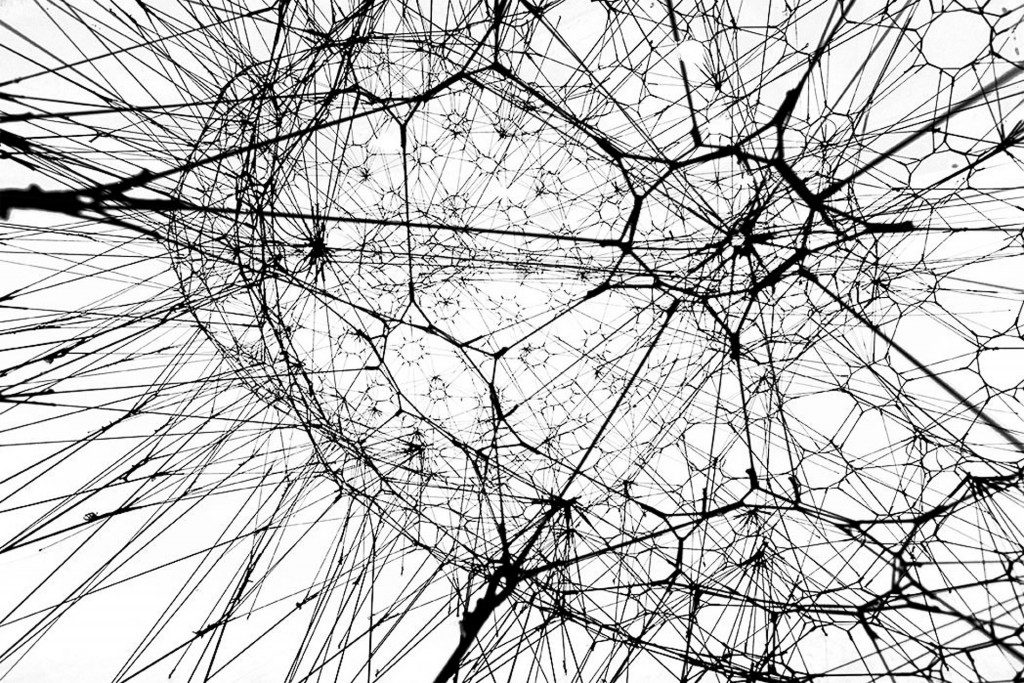
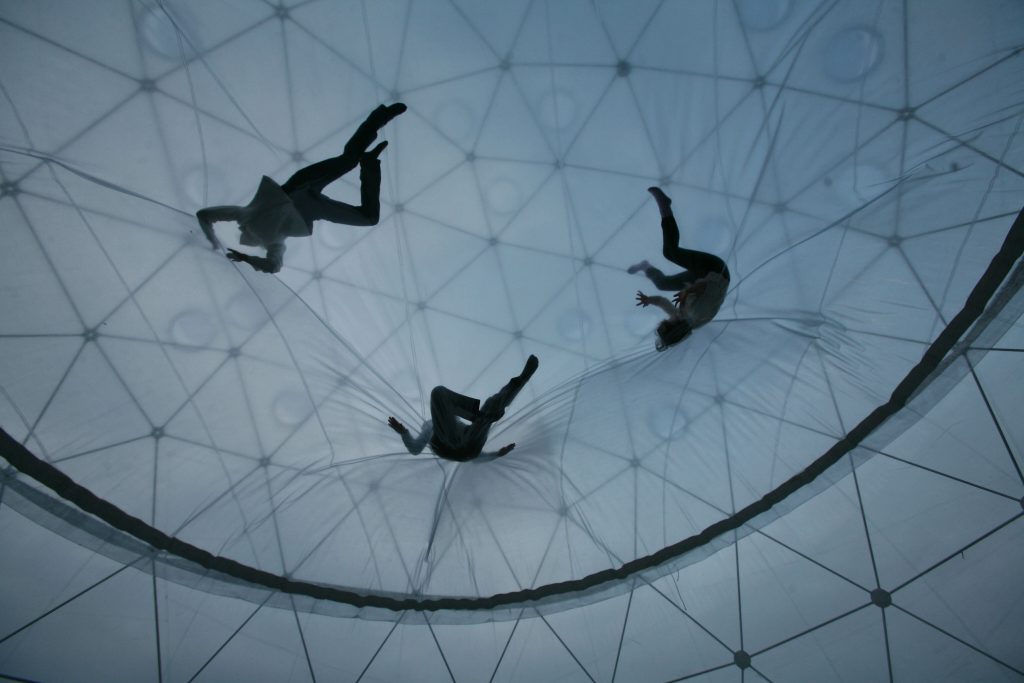
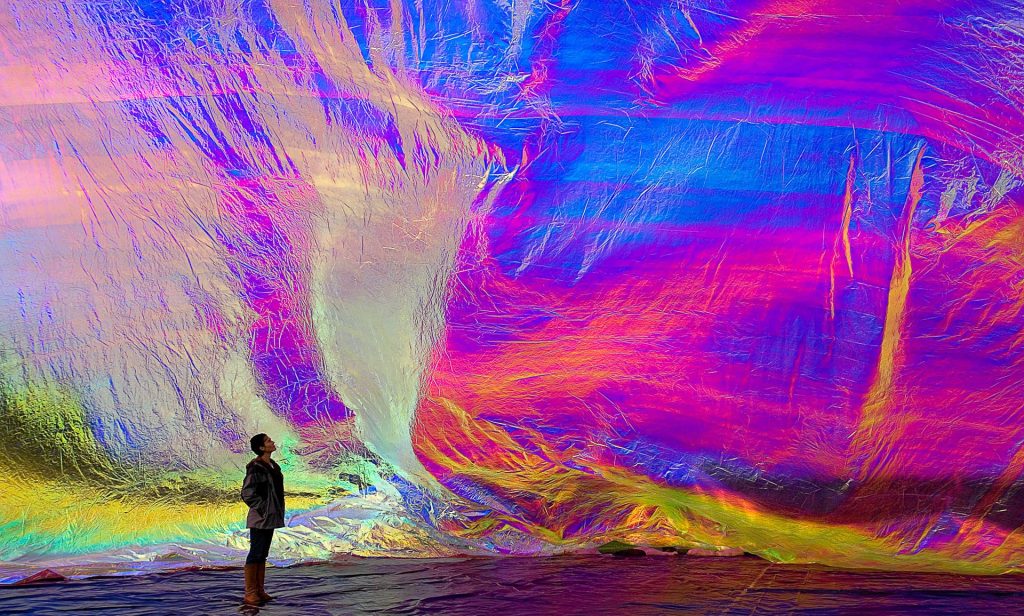
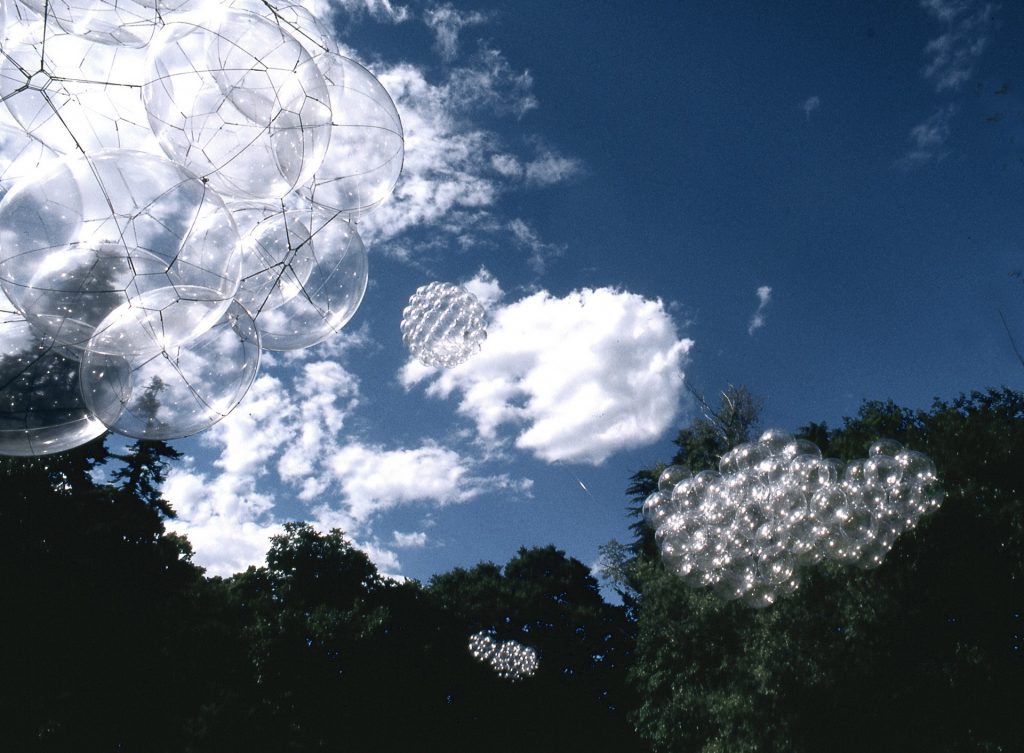
In Tomás Saraceno’s third solo exhibition at Esther Schipper Gallery, Algo-r(h)i(y)thms transformed the exhibition space into a web-like landscape of nets.
In Spanish, ‘algo’ means ‘something’. ‘Rhythm’ comes from the Greek rhythmos, meaning “movement marked by the regulated succession of strong and weak elements, or of opposite or different conditions.” Though rhythm is both biological and inherent, theorized as evolutionarily instinctual, relating in human history to the speeds of the human heartbeat, gait and emotional affect, our contemporary moment operates at a tempo artificially imposed rather than intuitively felt. Algo-r(h)i(y)thms then presents an urgent invitation to attune to our sym(bio)poetic futures, the radical reciprocity of all things, both living and nonliving, through a vibrational language.
Essentially blind, the web-building spider creates an image of the world through the tremors it sends and receives through the web, which also functions as an organic and specialized instrument for transmitting these seismic signals. The spider/web is thus considered a material extension of the spider’s own senses, and—some argue—of its mind. Accessing this Umwelt, the work actuates participants to see, touch, hear and exist for a moment within this web of linked perceptions, drawing awareness to proximal worlds.

Tomás Saraceno, Algo-r(h)i(y)thms, Solo Show, Esther Schipper, Berlin, Germany, 2019. © Photography by Studio Tomás Saraceno, 2019
Each of the converging nodes within Algo-r(h)i(y)thms refers to the different reverberation frequencies of micro- and macroscopic phenomena. Of the 3.4 kilometers of 1–2.5 millimeter black cord arranged in complex clusters, a 25 centimeter diameter net, 58-178 Hz (Argiope keyserlingi Courtship / Emitted Frequency), borrows its name from the peak frequencies of courtship signals produced by an orb weaving spider. Nets with broader diameters draw upon the vibrational rates of more monumental matter, such as the 140 centimeter diameter net 0.61 GHz (RXCJ2003.5-2323 / Radio Halo)—a halo generated by ultrarelativistic electrons surrounding this distant galaxy cloud.

Tomás Saraceno, Algo-r(h)i(y)thms, Solo Show, Esther Schipper, Berlin, Germany, 2019. © Photography by Andrea Rossetti, 2019

Tomás Saraceno, Algo-r(h)i(y)thms, Solo Show, Esther Schipper, Berlin, Germany, 2019. © Photography by Studio Tomás Saraceno, 2019
“Organisms are not atomistic individuals but hybrid assemblages… each body is a ‘nested ecology’ linked to others in complex ways. By thinking like this, we might notice our interconnectedness with other beings, other elements; how we might cooperate across species boundaries and how we might live and thrive together on a shared planet.”

Tomás Saraceno, Algo-r(h)i(y)thms, Solo Show, Esther Schipper, Berlin, Germany, 2019. © Photography by Studio Tomás Saraceno, 2019
A first iteration of the work under the title Galaxies Forming along Filaments, like Droplets along the Strands of a Spider’s Web was presented in 2009 during the 53rd Biennale di Venezia, Fare Mondi – Making Worlds, Venezia, Italy, curated by Daniel Birnbaum. Bruno Latour described it as, “a potent attempt at shaping today’s political ecology—by extending former natural forces to address the human political problem of forming livable communities.” In 2018, the work was sonified as Algo-r(h)i(y)thms, conceived for the artist’s major solo exhibition, “ON AIR” a carte Blanche à Tomás Saraceno, curated by Rebecca Lamarche-Vadel at the Palais de Tokyo, Paris. This third iteration was an invitation to play the web as a spider might, gently touching, sliding and stridulating within a system of amplified strings: a proposal of practices of attunement to non-human worlds in the context of the Sixth Mass Extinction.
The vibrating world of spiders can be further explored at Arachnophilia.net, a living archive of coexistences developed by Studio Tomás Saraceno and the Arachnophilia team, as well as through an accompanying artwork: the Arachnomancy App.

Tomás Saraceno, Algo-r(h)i(y)thms, Solo Show, Esther Schipper, Berlin, Germany, 2019. © Photography by Andrea Rossetti, 2019

Tomás Saraceno, Algo-r(h)i(y)thms, Solo Show, Esther Schipper, Berlin, Germany, 2019. © Photography by Studio Tomás Saraceno, 2019
...